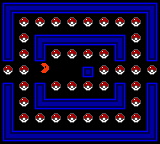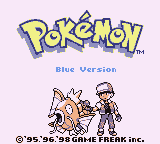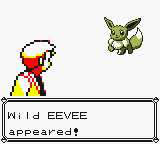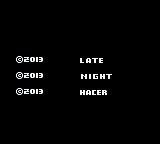GB\C Pokémon ROM Hacking: The 2nd Generation of Hackers and the Global Diaspora, 2009-2020 (Part 1)
From my book "The History of GB\C Pokémon ROM Hacking".
Previous Chapter: The Pioneers of Pokémon Hacking, 2000-2009.
The following extract will cover the first five sub-chapters of Chapter 3 (i.e.: Chapter 3.1 to Chapter 3.5) and Chapter 3.7 from my book "The History of GB\C Pokémon ROM Hacking", covering all the GB\C Pokémon ROM hacking scenes from the period 2010-2020, covering the national scenes located outside of the Anglophone countries, whose developments anticipated and contributed enormously to the latter in the course of the decade.
Korean GB\C Pokémon hacks are covered in their own sub-chapter (Chapter 3.6), also found here.
THE 2ND GENERATION OF HACKERS AND THE GLOBAL DIASPORA: 2009-2020
3.1 Philippines and the Indo-Pacific, 2010-18
3.2 Italy, 2010-19
3.3 Spain and Spanish America, 2013-20
3.4 France and Belgium, 2010-20
3.5 Central, Northern, and Eastern Europe, 2010-19
3.6 South Korea, 2010-20
3.7 At the End of the World: emerging GB\C scenes, 2010-20
3.8 Australia, 2010-20
3.9 Canada, 2010-20
3.10 The U.S.A. after the Diaspora: the traditionalists, 2010-20
3.11 The U.S.A. after the Diaspora: the progressives, 2010-20
The second generation of hackers had drawn from the experiences of the first and was different in the fact that, when they began, many of the studies undertaken had already been conducted and analyzed by others. These hackers arose almost everywhere and soon reached the skill level of their masters (except for the founding fathers of Scripting and ASM, who had always remained at the forefront). This period also saw the diversification of scenes, a certain increase in “seriousness”, and a broadening of the horizons of purpose.
Small outbreaks arose almost everywhere, which over the course of the decade would give rise to important national scenes: in addition to the three traditional centers of foundation of GB\C hacking (USA, UK, and Germany), new ones were born in Brazil (2007), Finland (2009), Philippines (2009), Italy (2009), France (2010), South Korea (2010), Australia (2010), and later Canada (2016). What was immediately striking was the emergence of scenes from non-English speaking countries, a practice anticipated in 2007 by Iron Nidow and Miksy91 and which would have its greatest diffusion in the Far East, Latin America, and Europe.
By 2014 it was clear that a real GB/C Hacking Diaspora had been reached, which interest had spread almost everywhere in the Western World, exactly as happened in the case of Third Generation Hacking 4-5 years earlier. By the end of the 2010s, the non-Anglophone “international” scenes that had an interesting catalog and showed signs of expansion were, in particular, Spain and Spanish-America (specialized in particular on Gen.2), Italy (specialized in particularly on Gen.1), and South Korea (specialized almost exclusively on Korean Pokémon Gold), in addition to the already pre-existing Philippine scene.
The authors of the “diaspora” quickly learned the notions they had learned and surprised the “masters”, giving new impetus and inspiration to their work which in previous years had increasingly waned (although most likely this was simply due to the specialization of the latter towards new projects not necessarily connected to GB/C, including Homebrew or simply to age advancement). At the end of the decade it became clear that the interest of “international” hackers was progressively moving towards increasingly complex, new, and advanced forms of hacking compared to the graphic/textual restyling of the early years.
If Anglophone hacks and German hacks had laid the foundations on the fields of ROM hacking (i.e. creating the tools and knowledge themselves), the hacks of the diaspora were instead able to create a “vocabulary” and a “literature” on them, creating new aesthetics.
3.1 Philippines and the Indo-Pacific, 2010-2018
In general, the most radical stylistic and aesthetic results came from the Philippines, where Anglo-American, Indo-Pacific (and to a lesser extent, Hispanic) cultures meet and where the language has no character barrier being written in the Latin alphabet. Beyond the errors and grammar, these hacks tended to be the ones that diverged the most from the classic aesthetics of the franchise.
Philippine hacks emphasized advanced scripting and the addition of new features, as well as the creation of a genre of hacks (almost all Gen.2) characterized by the combination of “Complex Scripting/Grotesque Scenario”, as well as the (unintentional?) introduction of cutting-edge factors such as bilingualism. All hacks were characterized by a strange combination of amateurishness and disastrousness coupled with absolute virtuosity.
The Philippine scene, already among the largest in the world in the GBA field together with the Indonesian one, was also extended to the GB\C field between 2009 and 2010 by Red Cabusao and other users coming from the area. Just like the U.S. communities of ten years earlier, these communities were born on a small number of amateur forums curated by teenagers passionate about ROM hacks, often on proto-forums hosted on (now defunct) sites such as Peperonity, which were easily accessible from mobile phones.
Unlike their much wealthier Western peers and contemporaries, the Filipino community had to survive in a less favorable economic climate than the North American and European ones, adapting with the few means available. If nothing else, the local economy was growing at the time, making new essential communications technologies such as Internet-enabled telephones more accessible, at least before new geopolitical developments created an “emergency situation” that lasted several years, almost leaving the country in shambles by the end of the decade. Unlike their predecessors, however, the most cutting-edge tools and instruments of the time were finally available, combining widespread knowledge with the enthusiasm for the D.I.Y. artistry typical of emerging economies.
The community soon expanded to include fans from the Indo-Pacific and the Indian Subcontinent, and was also very important on a cultural level as it chronicled about the countercultural developments of the area using English as a lingua franca, documenting for example the moralistic repression around to the “sexual scandals” of actors and actresses in Indonesian hotels, as well as the very unknown “hacker war” between Indonesia and Australia in 2012, which they were the first to talk about. In a way, for the Far East the 2010s were the Northern Hemisphere’s equivalent of the 1960s: a time of barbarism, proxy wars, and space races disguised under a blanket of cheesy, colorful pop music, combined with youth protests and experimental nonconformism. It was inevitable that the cultural turmoil of the area would also spill over into this gaming counterculture.
MrTien Duc
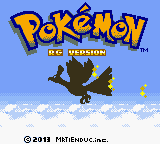

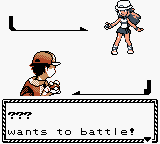
The first author to emerge from these Philippine English-language circles and forums with a complete GB\C hack was the little-known Filipino ROM hacker MrTien Duc, who created Pokémon RG (2012-2013), the first complete Filipino restyle hack, a sort of elegant fusion between Pokémon Gold and Pokémon Fire Red that re-proposes the original game but with a different incipit, a new and completely changed starting city, and changed sprites. More of a rudimentary study in spriting and mapping than a mystical vision, the hack was subsequently lost for several years before being rediscovered in the 2020s. The result obtained, while decent, still reflected a certain stylistic dependence on the rest of the world’s hacks of the period (especially Pokémon Silver Advance Adventures and Pokémon Sterling Silver) rather than indigenous aesthetics, even though the very first signs of stylistic emancipation and future experimentation in the Philippine community experience can be found already here.
Hacker
The most prolific author of the Philippine school, a certain Hacker, also known as Hacer or HFD (not to be confused with HFD a.k.a. Meowth Hacks), was in a certain sense the most characteristic hacker of the entire national scene: he embodied the fusion of virtuosity and eccentricity, according to a logic of patience and do-it-yourself ingenuity that only people who have to deal with the daily difficulties of emerging countries can skillfully overcome. Also famous as a real cracker under various aliases, including “ViruZ”, he became famous for the “joke” computer viruses he created, including the virus that automatically shuts down computers.
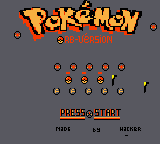
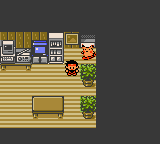
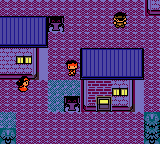
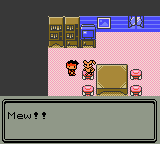
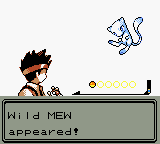
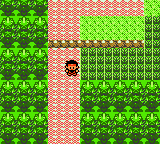
In any case, his career began in 2012 with the creation of four hacks, of which the most famous was undoubtedly Pokémon Orb (October 2012-January 2017), the first Philippine restyle-overhaul hack to be completed, made during almost five years of development, created (it seems) on a mobile phone, as with many other hacks created by the Philippine school. The hack began as a “disastrous” hack that would be parodied by Freako in Pokémon DarkGray Stone the following year. However, the hack also contained virtuous scripts, such as events for catching special Pokémon, including a Shiny Mew in a house at the start of the game. Subsequently, rather than recanting what he had done, Hacker exploited those “flaws” to develop a deliberately bizarre hack: and so, the pedestrian stuck in the middle of the trees became a ninja (who also makes the player jump and climb in a scripted event), and the glowing roofs, the half-destroyed houses and, above all, the bizarre tilesetting choice of having menacing mini-Pokémon with satanic red eyes instead of signs have become provocative stylistic elements rather than mistakes. The result was a mini masterpiece of the grotesque that became popular even with fan communities around the world.
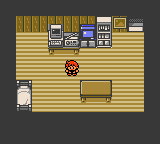
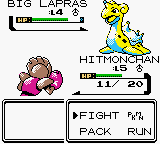

His Pokémon Mystic (October 2012, lost), also known as Weird Mystic, essentially confirmed his skills as an author as a fusion of ingenuity and eccentricity.
Lalitaristotle
Also around the same time, the pioneering proto-Glitch aesthetic example advocated by Hacker (a.k.a. Virus) was joined by one of the most lively and erudite souls of the Filipino community, Lalitaristotle, an encyclopedic connoisseur of GB\C ROM hacks who debuted with the sacrilegious, mocking, and deliberately glitched Pokémon Karton (May-June 2012), a retro affront with few equals before it, which unfortunately remained unfinished.
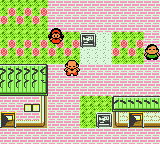
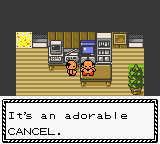
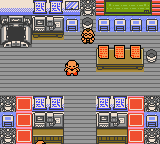
This cosmopolitan insolence disguised as a third-worldist derailment was actually a careful programmatic operation of Glitch aesthetics ante litteram, a hack based on Pokémon Silver (one of the few) that proposed itself as a low-budgeted spiritual heir of the Dadaism advocated by Pokémon Crystal Redesign and Pokémon Crystal World, proposing authentic outrages to decency in terms of tilesetting accompanied by destroyed and vandalized environments everywhere — with the protagonist replaced by a hiker. To add insult to insult, the hack was partly created using Pokémon Silver Advance Adventures as a starting point: the introduction, in fact, bears the words “Made by Meowth Hacks”. In fact, the shameless and vandalic nature of this authentic punk hack should not surprise, given that the author’s name is nothing other than the fusion of two famous figures who represent the two opposite cornerstones of Western thought (respectively, rational and irrational), namely Aristotle and Lolita, whose crazy imaginary common denominator birth is ideally this hack.
Pagara123
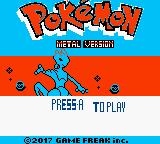
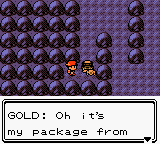
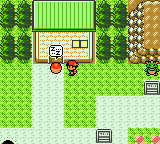
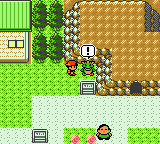

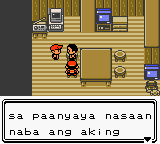
More modest but no less creative, Filipino hacker Pagara123 created one of the first bilingual hacks ever (the second, to be precise), offering the world the visual and cinematic fantasy of Pokémon Metal (May 2017), a bizarre but funny hack including paradoxical events that defied every “acceptable” hacking convention from a scripting perspective. Between talking Pokémon, sleeping Voltorb, and characters who deliberately disguise themselves with lots of dialogue, this hack was in fact a blasphemous lo-fi reinterpretation of the very first Pokémon Prism demo, however renouncing any elitism and programmatic seriousness in favor of pure entertainment.
Kovidomi
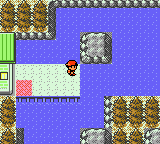
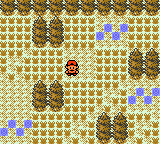

Much more pictorial and almost impressionistic, the very unknown Filipino hacker Kovidomi instead created the evocative Pokémon Ocher (December 2017), one of the rare overhaul hacks based on Pokémon Silver, which was essentially a study in copper entirely dedicated to the theme of nature in biological decline. Basing the region on a distorted and idealized version of Monte Carlo and the principality of Monaco, this humble hacker was one of the few to create abstract (and perhaps even ecological) meanings solely from the visual and color point of view, thus bringing his aesthetic closer to painting than to ROM Hacking.
Lipun
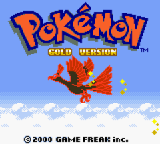
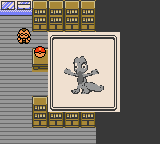
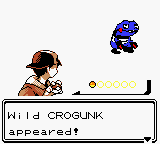
One of the most historically informed and dedicated hackers, second only to 80C and Miksy91 in encyclopedic completeness, was Filipino amateur hacker Lipun, who however quickly became a pariah in Western ROM Hacking due to his often-impulsive youthful temperament (like many others of his generation, after all). Building his hack on the example of the unknown Pokémon Silver Advance by Meowth Hacks, Pokémon Legend World (August 2011) was, if nothing else, one of the first Filipino GB\C hacks to be published, demonstrating an unpretentious but at least historically informed amateur hacking — beyond the spriting antithetical to the levels of respectability of canonical standards. The indignant reaction of the public was so harsh that he left direct hacking aside, settling instead for occasional collaborations and, much more importantly, for one of the first attempts to catalog and compile all the GB\C hacks ever created. Over the following years, Lipun and other colleagues thus became among the most important popularizers and catalogers of ROM hacking, preserving for History dozens of “alternative” hacks that would otherwise have been lost forever in favor of the more popular hacks. Without him realizing it, his “erroneous” spriting instead became the basis for future experimental works that deconstructed the very concept of spriting and the presumed standards of seriousness of how to make sprites (as attested by post-modern comical hacks such as Pokémon Light Platonism).
Lost Gen.1 Filipino Experiences
In addition to these authors, there were many others from both the Philippines and the Indo-Pacific area whose exploits have unfortunately been lost in time and ether. For instance, although almost all of the Philippine GB\C hacks were based on Gen.2, there were also experiments with Gen.1 hacks, which unfortunately were never published in beta versions. The most striking example of the time was the demonstration, shown on the Skeetendo Forum at the beginning of 2013, of a Gen.1 hack that transformed the bike item into a rideable Doduo: not only did this example anticipate future hacks such as Pokémon Coral by several years, but it would soon also inspire the mechanics of the official games of Pokémon riding to move around the overworld.
Red Cabusao
The most important of the Filipino hackers, however, was one of the main founders of the community, namely Red Cabusao, a true programming genius who had to adapt to creating his masterpieces on a mobile phone rather than on a PC due to economic constraints. In addition to being one of the cultural souls of the entire scene and a sort of ROM hacking teacher who spread in the area all the main tools and most experimental tutorials available at the time (it is said that he learned Tauwasser’s Scripting Compendium by memory), he contributed enormously to making this community known to the rest of the Western world, teaching himself English solely through videogames and some other Western trivia.
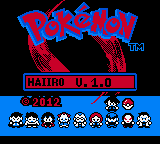
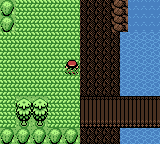
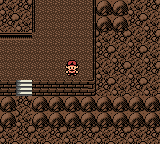
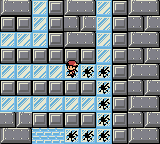
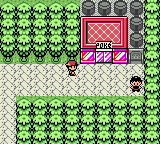
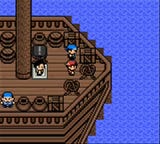
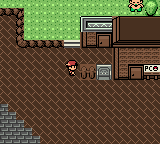
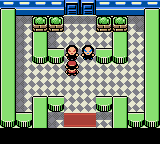
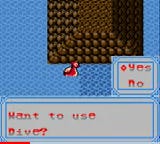
The first master of post-modern Filipino hacking, Red debuted in 2010 with an avant-garde and radical hack that, inspired by hacks such as Pokémon Prism, exaggerated its avant-garde components, arriving at something completely new. And so, regardless of the English grammar mistakes, Pokémon Haiiro (2010-May 2012), one of the greatest GB\C ROM Hacking masterpieces ever, became the most famous GBC hack of the Philippine Gen.2 hacking school, an avant-gardist hack that was created on mobile with Binary hacking. This hack, even before many other experimental hacks accomplished the feat, added everything: Sub system, Shiny Repel, playing like Pacman complete with a labyrinth with collectible pills and warp, new events modeled on the basis of the three Regi of Gen.3 games, scripts created from scratch that are the envy of those of Prism complete with camera movement, and multiple events with characters that interact with each other in a way that makes Third Generation games appear amateurish, shattering ice, a hot spring, and even (also playable in the published demo) an entire sidequest in which players end up playing another Game Boy Color game, Dragon Monster Trainer 2 Tara’s Adventure, here recreated from scratch using the basic Pokémon Gold engine. Haiiro was essentially the first hack to merge not one but two different types of videogames into one, making enormous progress both in technical and stylistic terms for the cross-over genre, which previously (with exceptions, e.g.: Pokémon Black Soul) was little more than an amateur novelty.
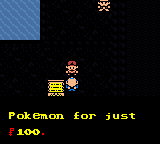
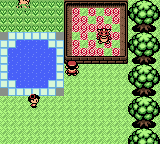
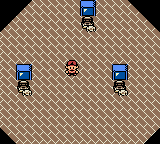
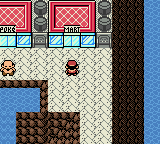
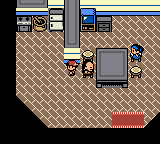
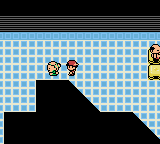
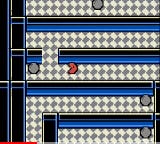
The hack was discontinued due to negative feedback from most audiences (aside from the Filipino community, in the West only Miksy91, 80C, and a few others seemed enthusiast at the time) and was also lost for several years before it was rediscovered by a younger audience. Red Cabusao decided at that point to move on to a “serious” and more formal project that could satisfy the Western public by presenting a game with functionality and virtuous appearance without the “oddities” that characterized his first hack. The result was the revival of a project abandoned by Melash in 2009, i.e. the port-over of Pokémon Emerald from Gen.3 into Gen.2 (Pokémon Ancient Emerald), here recreated from scratch instead exploiting the base of Pokémon Gold (rather than that of Silver, as in Melash’s case), and which went down in History with the title Pokémon Hoenn League (March 2013-May 2014) — after the provisional title of Pokémon Emerald Time of 2nd Generation.

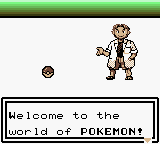
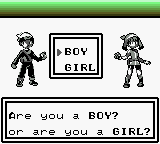
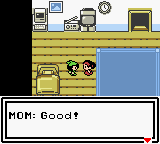
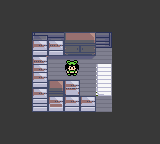
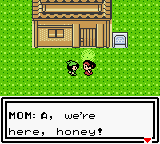

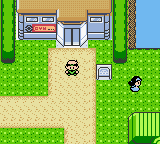
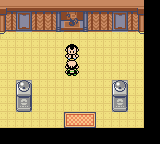
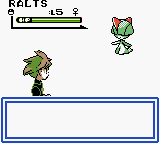
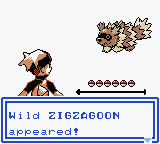
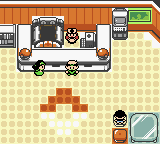
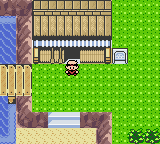
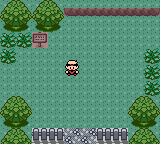
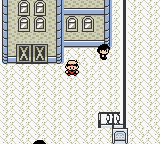
Entirely created on the mobile phone solely through binary hacking, this hack with a radical and total change represented an even more titanic effort, proposing an impressive transposition of the Gen.3 game five years ahead of its time compared to future attempts made with the decidedly easier to use disassembly. Compared to Melash’s unfinished and unpublished attempt, in this case there were two playable demos in which the complex events of the Gen.3 game were recreated from scratch, although some adjustments were necessary to compensate for the formal limitations of the Game Boy Color. In any case, the level of detail, even in the graphics sector, was extremely impressive for a hand-made hack, especially in the more complex environments and maps where the hack corresponded almost exactly to the original game even aesthetically. Furthermore, the quality level of spriting was even higher than what future disassembled attempts proposed. Sadly, development on the hack would be halted a few years later, and news about its cancellation would arrive only around the time of the Pandemic.
His last ever publication was the avant-gardist Pacmanmon (May 2014), a “minigame” that, as it would have happened with Pokémon Haiiro had Red Cabusao ever published it in its latest state after its last Demo, trasposes somehow Pacman into Pokémon Gold. The release actually was a sort of anti-spam device that would be used to unlock Pokémon Hoenn League once completed.
Having disappeared from the scene around 2015, Red Cabusao (apparently) relocated to Japan, making occasional returns over the years, although he would not create any further hack. Red Cabusao was above all the demonstration that considerable and appreciable results can be obtained even with the smallest of available means.
Alea, Glitch, and Avantgarde: Chowdit
However, the most radical hacker of all in the Indo-Pacific was an Indian hacker, the avant-garde pioneer Chowdit. Although he was ignored by the public and accused of being autistic, whether it was true or not Chowdit, at the time of his debut, was the most radical and experimental Pokémon hacker ever, a true avant-gardist, the John Cage of ROM Hacking.
First, Chowdit did not even design the concept of a ROM hack as a product that must be published but rather as a real experiment in continuous evolution, of which there can be hundreds of versions all different from each other. For this reason, since his debut in May 2012, Chowdit created the first of his most radical and important inventions: random hacking. Previously, the model hacker always had in mind what to do with his hacks: Chowdit instead removed the hacker’s intervention from the actual course of the hacking itself, preferring to let chance decide the most significant effects of his hack – for example, by allowing a binary corruptor program (designed for very different purposes) to corrupt key sections of the working ROM in order to create glitches and bugs with totally unpredictable effects.
The first experiment, the plunder-hack Chowdit Knife, was nothing more than a smuggled copy of Z80A’s Pokémon Knife deliberately glitched to create random destabilizing effects during the emulation phase. Determined to openly eradicate every convention ever conceived in terms of hacking, Chowdit (already in 2012) created one of the first Gen.1 hacks to include scripts with “custom” (or rather, corrupted) movements, Pokémon Chowdit Yellow, perhaps the masterwork of aleatory hacking, a hack that deliberately modified the old man event in Viridian City to create a custom script (also including arbitrary code execution) that generated deliberate glitches (mentioned in the modified dialogue) that distorted and destroyed the game world while the player was free to walk around, glitching the maps and graphics and activating the walk-though-walls glitch on purpose via ASM (“I’m going to Cinnabar Island to see MissingNo and DIE” recites the dialogue with the old man, followed by a glitched walk).
And so, several procedural and unpredictable hacks followed, obtained by editing and pasting together a series of ROM corruptions using a corrupting program: Chowdit, in doing so, created the de facto antithesis of patches for ROM hacks. Along these very lines he created hacks of Gen.1 and Gen.2 with modified screens, but which often were corrupted depending on each game “attempt”, among which the only documented hacks are ones such as Chowdit Diamond (based on Blue), Hindi Blue, Tamil Gold (which, despite the title, did not necessarily contain the respective languages), all dating back to a period between May 2012 and April 2013.
Exactly like Dadà a century before him, Chowdit represented the terminal point of no return of an art that was now aware of the lack of meaning of art itself except as itself for its own sake, conceiving it as an experience rather than as a mere product, therefore linking its production precisely to those individual and unrepeatable experiences rather than to the logic of the serialized product repeatable every time. Misunderstood and ostracized by almost the entire public, banned from the international forum on which he presented his projects, Chowdit finally abandoned the world of Hack ROMs to dedicate himself to other more or less experimental projects. He was never taken seriously, even though his hacking method was the most radical to date. Chowdit was neither an author of his time nor an author in controversy against it: Chowdit and his avant-garde art “were” their own time, the digital astronauts taking their first steps into a completely unexplored territory of the world of amateur video games.
3.2 Italy, 2010-2019
The other avant-garde GB\C scene was the Italian one, which was the one that, together with the Philippine scene, introduced most notable stylistic and aesthetic subversions.
Since the very beginning, Italian GB\C hacks had the propensity to emphasize the use (even massive) of ASM and the desire to “break” with traditional and canonical patterns or aesthetics, both of the Pokémon games and of the other GB\C hacks, and showed over the years a certain tendency to move towards the “avant-garde” in certain aspects that characterize Pokémon games, be they technical or of a purely visual or conceptual nature. Even restyling was not negligible: in addition to the graphic changes, Italian restyles still favored the introduction of new features and the use of ASM.
Early Italian Precursors
Italian ROM hacking was born between 1997 and 1998 by translation pioneers such as SadNes City and Clomax, the latter the author of the Italian translation of Secret of Mana. Since the completion of RPG video games was highly dependent on texts, the language barrier became a real barrier — unlike, for example, shooter video games of the time. The lively Italian ROM hacking scene was therefore already quite rooted and famous in the country at the beginning of the 2000s, even though it was mostly the zany GBA Pokémon hacks that publicized the phenomenon of ROM Hacking to the public towards the end of the decade.
Obviously, even in the case of the GBA hacks there were avant-garde precursors, among which the two most famous and important authors and developers were Dante (author of Pokémon Crono) and Zeno (author of Pokémon Silver Legend), along with HackMew (author of dozens of revolutionary programs and utilities), as well as many other authors and enthusiasts who also contributed at an international level to making GBA hacking accessible and understandable. Therefore, exactly as in the case of the national scenes of the rest of the world apart from the German one, most of the Italian Pokémon ROM Hacking scene was mostly concentrated on Gen.3 games.
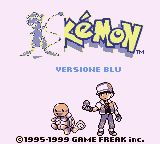
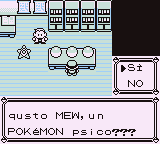
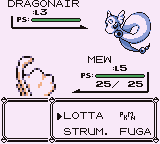
However, even before all of this even took hold, there had already been pioneers dedicated to Pokémon hacks for the first two generations, especially the first. The first Italian hack of Pokémon is therefore Pokémon Mew (unknown author, 2001), according to the dates one of the first if not the first non-translation Pokémon hack to have been based on the localized versions rather than the English ones. This bizarre archaeological finding already demonstrated the experimentalism (and eccentricity) that future Italian hacks would possess. Framed in the genre of hacks with Pokémon as Protagonists, the hack was a preview of the Competitive hacking genre as well as of “maximalist” hacks. The game features Mew as a starter and includes only the final evolved forms as wild Pokémon, and theoretically concludes with a near-impossible battle against Gary in Cerulean City, with the remainder of the original, unmodified game offered as a “bonus.”

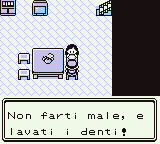
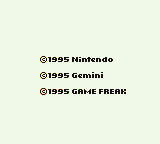
Finally, in 2004 Gemini created the first Italian translation of the Japanese Pokémon Green (March 2004), starting from the Japanese original itself as a basis. Although there was a serious error (opening the Options menu crashes the game), and although it was created in the wake of the “unfaithful” translations of Pokémon Green in the early 2000s (see: poetic license), nonetheless it was the most playable adaptation together with that of BG Translations and, unlike the latter, Gemini’s translation hack used punctuation correctly. Even in this previous case, some of the premises for future Italian GB\C Pokémon hacks were created here.
Sawakita and the Disassembly Revolution
In any case, the Italian GB\C hacker of Pokémon with the most important and influential impact over time was Sawakita, one of the most underrated and underestimated hackers ever among the public. Inspired by the decompiled Sonic the Hedgehog hacks of the mid-2000s as well as by the very procedure for creating 8bit and 16bit video games, Sawakita introduced the disassembly method as an implementation form for hacks also in the case of Pokémon, between 2009 and 2012. During this period, he joined efforts with the Anglophone and Germanophone hacker IIMarckus, already active in the RPG and hacking scenes since its inception, to carry out the complete disassembly of Pokémon Red and Blue.
Decompilation, unlike previous types of hacking, allowed for the creation and modification of videogames by simply modifying files in a folder in which all the components of the game have been converted into files and “chopped up”: indeed, this was a sophisticated form of reverse-engineering. Thanks to this method, for example, it was possible to write strings of ASM code contained in a text file to introduce new features, to modify images with a simple visual program, or even to import lines of shareware code that could be reused in other projects, making the creation of a hack by these means extremely simpler than the binary method, the latter of which requires modifications created and made meticulously by hand without being able to automatically reshape the structure of the original game (except for truly extensive modifications).

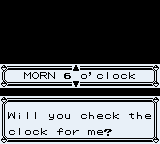
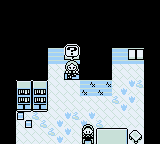
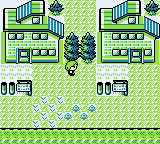
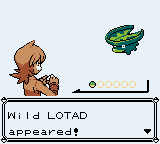
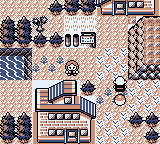
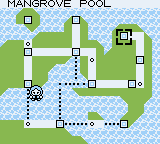
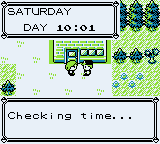
Having created the most important revolution in the world of Pokémon ROM hacking, Sawakita proceeded to give a simple but very effective demonstration of what could be done with the new medium by creating his debut hack, Pokémon Wood (November 2010-March 2013), one of the most influential hacks of all time as the first disassembled hack, and as one that conceived the new medium as an opportunity to distort and expand the game rather than purely redesigning it by raising the levels of the opposing teams (as its successors will do all too often and willingly with the disassembler ten years later). The hack, vaguely similar in plot to Pokémon Violet, included only two cities and a route, yet it included so many details and facets as to make that short gaming experience extremely intense and varied, including among other things the first implementation of the day\night system in a Gen.1 hack.
The hack took place in the Durma Region and included 190 Pokémon, as well as important features that were taken up in other disassembled hacks, as in the case of the Pokémon Red & Blue Gen.2 Graphic Patch by Danny-E 33 which was nothing more than a pre-packaging of the graphic modification included by Sawakita in his hack, unfortunately without the author being even mentioned (in fact, Danny-E 33 was also the one who unduly published the playable “demo” of Pokémon Wood in 2013 without the author wanting it). Pokémon Wood was never officially published except in the circulating screenshots, and in any case Sawakita disappeared publicly for at least six years, except for a sporadic reappearance during the Pandemic, even though it was later rediscovered by the international public thanks to the contributions and accreditations for its contributions dedicated to him over the years, in particular thanks to 80C’s 2014 Encyclopedia of First Generation ROM Hacks and, later, the accreditation for his work in the documentation and credits of Pokémon Grape and Pokémon Pink.
In any case, Sawakita was the hacker most like real ROM hackers from outside the toxic world of Pokémon fandom than to the rest of his field of amateur hackers known to the public. In this sense, he represented the pioneer of that entire non-public and private scene of Italian ROM hacking dedicated above all to research and experimentalism rather than the search of public success.
Uac.Dario
An author of similar scope and intentions was the unknown Uac.Dario, who was mostly known for the notable contributions he made to Pokémon Grape (i.e., the colorization system, the custom icon system, the quadruple bike speed, and the damage counter fighting). The colorization system he created was a masterpiece of Game Boy Color engineering: by exploiting the internal SuperPalette system, it was converted and made “upward compatible” with the Game Boy Color hardware, a kind of modification that was not featured in any of the original Pokémon games (and, probably, in none of the Nintendo Game Boy Original games).

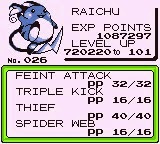
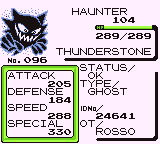
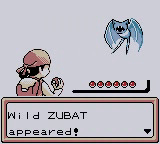
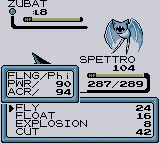
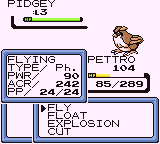
(Screenshots of the unreleased Pokémon Denim, around 2013-14. Courtesy of Uac.Dario.)
Although he had created several hacks for personal enjoyment that introduced unthinkable features dozens and dozens of years ahead of the rest of ROM hacking (at par if not beyond the levels of the Midnight Hack in terms of scope), as in the case of Pokémon Denim (unreleased), the author preferred to maintain his passion on a purely personal level, completely renouncing the idea of compromising acceptability with the public and even choosing total oblivion, a sign of a profound acceptance of life and the maturity that it comes at the expense of vainglorious childish dreams of approval (as 80C instead ended up doing). In this sense, Uac.Dario was the greatest of the Italian ROM Hackers who ever took the path in the modification of the Pokémon games: not so much greatness understood as skill in computer programming but rather modesty and humanity.
These masters of the avant-garde also alternated with a series of experiences dedicated instead to the restyle of the original games, made according to the most disparate purposes which instead led to some of the most singular artistic experiences of the pixelated history of the Peninsula.
HalfShadow
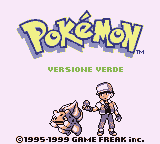
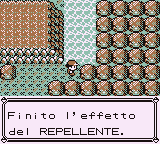
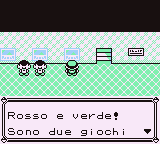
The most representative and traditional of these authors, closer to the spirit of translation ROM Hacking of the origins of the times of SadNes City and Clomax than to the rest of the fandom, namely HalfShadow, launched an ambitious program aimed at “returning” the original games in Italian before they were defaced, censored, or adapted into versions unrecognizable from the originals, albeit with some functional additions.
If Pokémon Green (February-October 2014) was a study in scarlet on the origins of the Japanese myth if it had ever been westernized like the other three Western-adapted versions (with the extra addition of a stabilized MissingNo), its subsequent trilogy of hack, even expanded to a series of six update hacks and additions in two different languages (both English and Italian), Pokémon Gold \ Silver \ Crystal 2.0 (March 2016-March 2019) instead represented the path of the restyle of committed philological restoration, manually reinserting the functionality of the Safari Zone of the first generation games that was never implemented in time for the release of the source games.
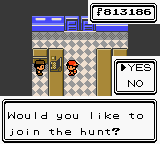
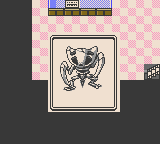
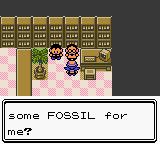
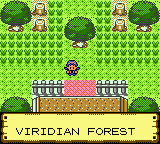
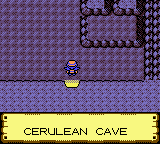
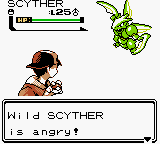
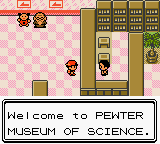

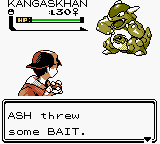
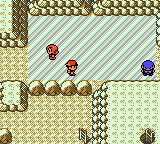
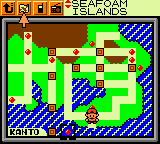

Although hundreds of Gen.2 hackers openly speculated on whether the functionality could be reintroduced in an overhaul hack or not, this “restoration” job was the only one to accomplish the feat in a published release. The success has been made possible also thanks to an intuition of HalfShadow, who, by exploiting a technical flaw not foreseen by the original developers, was able to reuse flags theoretically already used previously (but in reality made useless by other flags) in order to create new events that made the restoration of areas removed by the developers more than possible, demonstrating how much worse the original games actually were (and how hasty and opulent the original developers had been).
Later on, HalfShadow would also devote himself to similar restoration projects, thus yielding Pokémon Blu Idro for Gen.3 and, especially, the Gen.4 equivalent to his Gold\Silver\Crystal 2.0, possibly his most experimental project.
95Girl
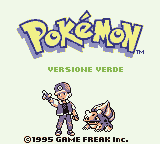
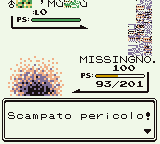
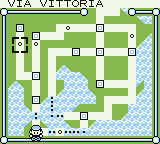

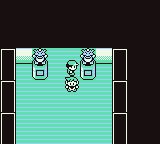

Taking the purist and restorative intuitions shared with those of HalfShadow to their extreme consequences, the author and hacker 95Girl, the first female ROM hacker confirmed to have used ASM in a GB\C Pokémon hack, since 2013 attempted a restoration project of Japanese Pokémon Green (February 2014-October 2023) with even more ambitious goals: creating a version so faithful to the original as to also reflect the game errors that had been removed, given that they were capable of radically modifying the gaming experience. These premises would later also lead to its complementary version, Pokémon Rosso Uncut (November 2023-January 2024).
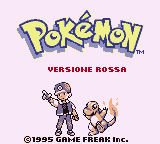
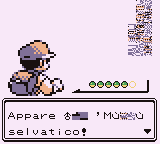
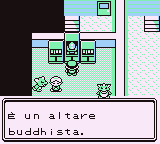
By leveraging all those unwanted elements that were methodically removed by videogame developers from the very beginning, she reached the opposite result by following the exact path backwards: starting from the result to get to its origins, de facto completely overturning the concept of developing a video game as well as the concept of adaptation itself. Paradoxically, the result obtained was not only the most purist philological hack possible as per the author’s intentions, but it was also a truthful and pioneering example of a Glitch hack which introduces deliberate errors as a game mode in its own right compared to the traditional one, unlike of all the other adaptations that had occurred up to that point (although the author always believed that it was more of an effect than a cause). With this aim and result, although she has always maintained that it was a simple desire, 95Girl had proven herself to be the most radical traditional ROM hacker: there has never been a case in History in which the most adherent possible tradition was achieved in the most anti-traditional way conceivable.
An avid fan of hacking proper, film piracy, and alternative rock music, 95Girl would later (and as a consequence) demonstrate a devout interest in Pokémon bootlegs, contributing in part to the rediscovery of the Chinese bootleg Pokémon Chikorita in 2024 and, most importantly, contributing significantly between 2023 and 2024 to the “REON Project” for the Westernized multilingual re-adaptation of Japanese Pokémon Crystal, which was markedly different from the Western localizations due to the pioneering Mobile Wireless Adapter system.
Drake Seawood


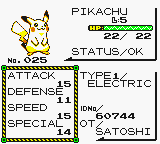

One of the most overlooked but actually influential hackers in future developments on the most snubbed basic version ever, namely Pokémon Yellow, the Italian Drake Seawood built an ideal bridge between the generation of Colosseum Translations and that of Sawakita with his key work, Pokémon Yellow Strike (May 2014-2016), the first disassembled Pokémon Yellow hack (started in binary) and the first major completed work based on that version. Taking up and expanding some of the premises of Pokémon Yellow Reborn by Miksy91, the author created the first complete Italian restyle-overhaul hack (completing the first final version in 2016). The work continued in the following years, gradually introducing more and more features, although there was no further update in this regard from 2019.
The hack, together with its Finnish predecessor, became the most influential Pokémon Yellow-based hack ever, in particular from the point of view of the graphics sector. Paradoxically, Drake Seawood achieved much more success abroad than at home, and he was not as successful as its international successors who made much simpler knock-off hacks than his one many years later.
Hikikomori and Plague Labs
Nonetheless, there was an Italian ROM hacker GB\C who instead hooked up to a completely different type of tradition, eventually becoming most successful than anyone else: starting from an imaginary made up of trashy Hammer films mixed with the bloodiest and most carnal Pasolini film playlists filled with Satanism and other gothic and surreal fetishism (of the Freudian nightmare rather than the utopian dream), the outsider Hikikomori summarized in a cultured post-modernist operation a deliberate obscene and perverse affront to the concept of restyle, namely Plaguemon (October 2016-October 2017), the greatest masterpiece of Creepy hacks.
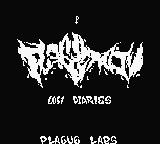
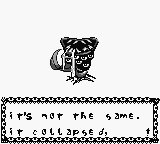
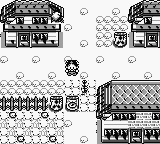

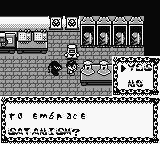
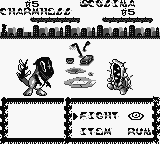
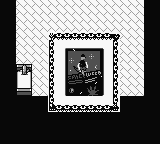

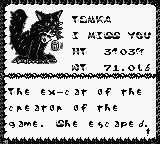
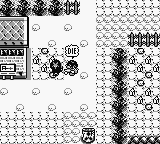
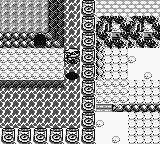
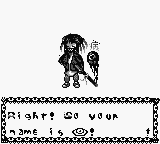
This hack, born from the conjunction of all the most repellent elements of Italian ROM Hacking and the global subculture, was also a jewel of programming that added new and exciting features, including new fight screens with new animations, costume changes, new objects (including drugs and weapons), new features (including new vehicles, traps, the ability to bomb buildings, and even a built-in drum machine), terrifying new sprites, and new music.
The game — set in a post-nuclear and apocalyptic Kanto based on sex, drugs, ROM hacking, and splatter satanism — was a moribund monochromatic spasm, the incestuous fruit of a macabre and repugnant cross between Pokémon FireRed Distorted (i.e. the famous creepy hack Gen.3 created by Wyschydog) and Pokémon Grape (whose hack is mentioned in FireRed Distorted, in which 80C participated), as well as a sampling of truculences and perversions halfway between Aleksei German’s Hard to be a God and the worst of Industrial Rock by Foetus or Ministry. Revulsions such as the Japanese Suicide Forest, Kurt Cobaine with the rifle, and goth/BDSM imagery abound. Gangsta and terrorist imagery is also mentioned. The game looks like a retro version of FireRed Distorted made in a criminal asylum by Repulsion-era Polanski. Made over “a terribly painful and anguished year” between Halloween 2017 and 2018, whether loved or hated it was nonetheless an important stylistic and design achievement, and it was the first (and perhaps the only) Pokémon hack to end up on TV.
Hikikomori would also create a sequel, Plaguemon Kado (2021-February 2024), based this time on Pokémon Trading Card Game, an also notable (and terrifying) title that even introduces aspects of psychoanalysis and which, unlike other hacks based on its game base, completely overturns the original starting game.
Hikikomori’s hacks were above all the expression of all those elements of morbid curiosity which, constituting the “excesses” and “exceptions” of the world, went to perfectly explain the illusion of the “normality” of the world itself.
80C
However, the most renown of the Italian avant-gardists was also the most notoriously controversial and contradictory, namely 80C (also the author of this book, i.e.: me).
Just like many other eccentric and controversial outsiders before him, such as Hat, Coolboyman, or the German hackers of the beginning of the millennium, 80C represented a contradiction in terms that accompanied him throughout his public “career” in the world of counterculture before his retirement in 2015, and which manifested itself above all in the extremely conflictual relationship with the public and with other authors, leading him to the nickname of “the angry man of ROM Hacking”. The love-hate relationship developed with the culture shock during the U.S. internship led 80C to study the Hack ROMs of the rest of the world, unconsciously bringing him closer to the role of ethnographer and historiographer of hacking, a bit like Miksy91 had done before him, although developing the initiative well beyond what was done previously, thus leading to period results such as the compilation of the Gen.1 ROM Hack Encyclopedia (2014).
The underlying anti-intellectualism, the result of impoverishment as well as disillusionment with the more elite environments, led the author to an open contempt for virtuosity and technique (which he nevertheless resorted to, yet another contradiction) in favor instead of a deliberately anarchic and subversive program.
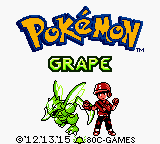

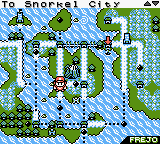
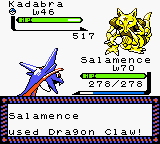

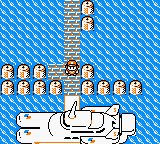
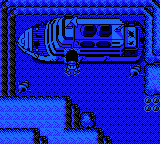
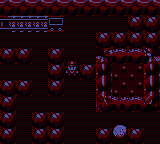
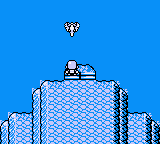
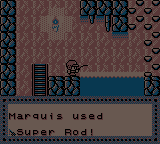
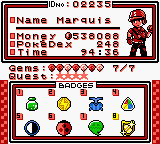
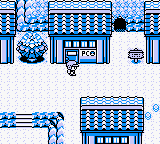
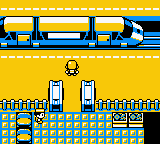


Initially begun under the auspices of countless thefts and plagiarisms and deliberate citations to the entire History of GB\C Pokémon ROM Hacking collected and investigated by 80C, his most colorful work, Pokémon Grape (October 2012-December 2019), instead became over the years a post-post-modern essay on the search for meaning and identity in an era in which having meaning and identity corresponded to the worst of dangers and sins for internal and global stability, perhaps the unconscious underlying theme of that whole Generation Z – although the public perceived the hack as a bizarre, surreal, and metaphorical comedy bordering on the incomprehensible.
The hack, beyond the countless famous or alleged stylistic and technical innovations, was a snapshot and spiritual testament to the troubled life of a provincial bankrupt who becomes aware of his failure, only to turn out to be a universal failure caused by himself, reflected in the plot of the game itself following several revisions over the years. Like the Beast of the Apocalypse, 80C had attempted to sacrifice the rest of humanity to redeem only himself, exactly like his character. Caught by a profound mystical and personal crisis, 80C first attempted the path of retiring to private life, only to then reappear in 2019 to make peace with some of the injured people, finally publishing the hack (in the meantime completed but shelved for four years) on the “day zero” of the Pandemic as a sort of compensation for the damage inflicted on the rest of the world, as well as to convey a completely different message (if there ever was one). 80C tried to convey his reflections on the awareness of life in an era in which humanity, love, and dignity were no longer values but even a source of hostility, as well as the attempt to communicate a sense of good-naturedness in the relationship with the world and the affirmation of the desire to live despite the senselessness of the universe, even if the resulting message, although it tried to be sincere and profound, was in reality extremely bizarre, obscene, and totally incomprehensible.
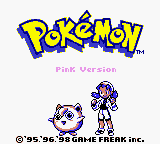
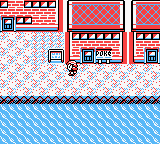
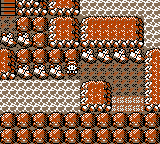

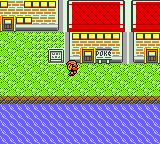
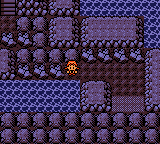
If nothing else, his most successful hack, Pokémon Pink (June 2014) — a very modest remake of Jeremy’s unreleased hack with a female protagonist, made in seven minutes timed as a challenge — at least demonstrated his sincere interest in the History of ROM Hacking, and perhaps actually represented the real 80C. The only point in common between his hacks was the estrangement exercised by the characters in his games, which demonstrated the artificiality of the very meaning of existence.
3.3 Spain and Hispanic America, 2013-2020
One of the most important GB\C national scenes was that of the Hispanic world.
The Spanish and Hispanophone hacks popularized the Spanish language in ROM hacking, a particularly well-curated graphic and tilesetting compartment, a lively use of colors and graphics, as well as ASM modifications functional to the aesthetic aspect, all accompanied by a propensity for Scripting and modernization of the GBC aimed at making it resemble new games.
Early Hispanic Precursors
Exactly as with the Italian ROM Hacking scene, the Spanish-language one also had its origins in translations, to be precise in the years from 1997 to 1998. However, unlike the former one, the Spanish-speaking scene differed due to the widespread diffusion of the language in the world, including, in addition to Europe, above all the Americas, thus making Spanish-language scenes as widespread as English-speaking ones. In any case, the first translation and adaptation groups into Spanish were initially focused on the news spread by the Federación de Traductores Hispanos community (1997-2000), from which new teams were born, such as Ereza, Vegetal Translations, Paladin Knights, Sayan – and, later, Charnego Translations (in 1999), the latter being the author of the zany, pornographic, and controversial Pokimon Rosa (April 2004).
Between October 1998 and 1999 Paladin Knights first developed and later published the Spanish translation of Pokémon Red (December 1999), whereas RapidFire published the Spanish Pokémon Blue translation (June 1999): these were the first European Pokémon hacks. Later on, Spanish-language translation ROM Hacking would be popularized by Todotraducciones (2000-06).
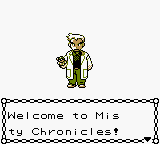

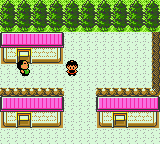
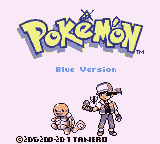
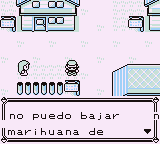
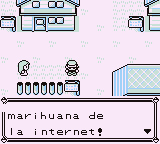
Meanwhile, the first Spanish restyle Pokémon hack to be published (in English) was Pokémon Misty Chronicles (January 2001), a Gen.2 hack (one of the first ever) by Peto Translations, which would be followed by Pokémon Blue Tanero (2001) by Tanero, a sort of Cokemon of the Hispanic world.
Hispanic ROM Hacking was already popular not only in the Americas but also in Spain itself, as attested by the live radio interview by Charnego Translations on the “Game Over” radio program of Radio Despí in Spain in March 2001, the first case of ROM Hacking exposition on the radio. A few years later, in 2006, the first Spanish-speaking world community solely dedicated to ROM Hacking (not just Pokémon) was also founded, namely Whack a Hack, which (excluding the “Rey Unown” hoax, published for the first time on the site, and which was created in the wake of the legends about the Gen.3 Pokémon games and which soon became very famous even in other languages) soon differentiated itself from other similar communities due to the high level of detail and depth of discussions and research.
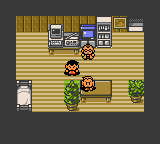
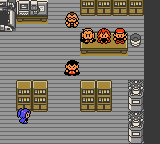
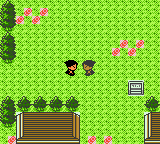
A harbinger of future international developments outside the Anglosphere was an unknown Spanish-speaking author only known as SHMA, who published the bizarre and hallucinatory hack Pokémon Legendary Dogs, better known as Perros VS Aves (July 2002), a blasphemous apocryphal sequel of Johto inspired by sci-trash which, for the first time, proposed a game world in which all the Pokémon are in the final or legendary stage, together with assorted oddities that were the envy of those of the Philippine GB\C ROM Hacking school, including the choice to collect NPC people instead of objects (a bit like in Martin Hack’s Pokémon Rocket Edition) and perhaps the first ever (involuntary) use of a character “reflected” as himself as if in a mirror. Additionally, the story presents a Pokémon world in which, a thousand years later, when all humans have become astronauts, the proverbial enmity between felines and birds has ended up evolving into a deadly clash between birds and legendary “dogs”, replete even with time travel between the remote past (in which the game begins) and the future. A forerunner of the basic premises of hacks such as Pokémon Légende and Kanto Explorers Through Time, this hack was more connected to the creative youthful bizarreness of the early 2000s than to the rigid and sterile formalism that would characterize many hacks of the period (and, above all, of the following one) in which it was published, and was the demonstration of how even the most uninhibited amateur approach can create even better and more innovative works than those of “futurist” engineers.
Therefore, the first decade of the 2000s saw more than anything else the exploits and successful experiments of Gen.3 hacks, which were pioneering and very famous, among which Sergio’s Pokémon Naranja was certainly the most famous and influential. Nonetheless, the world would have to wait until the following decade for a real GB\C ROM Hacking movement to arise.
Chamber (Spain)
In any case, the act of unofficial refoundation of the Spanish-speaking GB\C ROM Hacking took place in September 2013 when three GBC hack enthusiasts – namely Solo993, Blue Emerald and, above all, Chamber – published mods and patches for the GBC games, as well as graphic utilities such as the collection of de-vamped Pokémon sprites from generations after the second. The three also published patches and contributions for the Spanish versions of Pokémon Gold and Silver, among which the most impactful one was certainly the first patch for customized minisprites for each Pokémon for Gen.2 games, which would be used in dozens of Gen.2 hacks (including Pokémon Prism, Pokémon Orange, and Pokémon Crystal Clear) and which, although not compatible, would soon be imitated also in Gen.1 hacks (Pokémon Grape, Pokémon Team Rocket Edition 2, Pokémon Maize, Pokémon Prototype, among others).
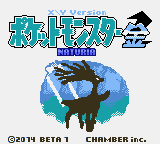
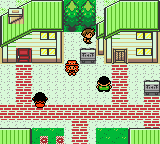
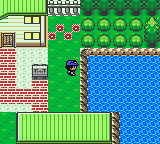
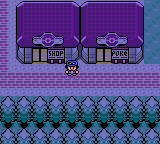
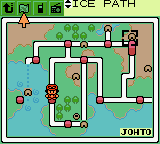
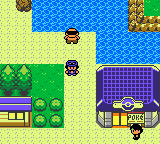

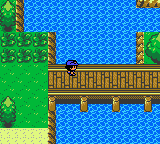
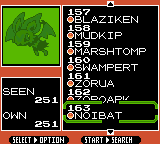
One of the authors of this triumvirate of graphical and functional fantasy, Chamber, originally from Spain (it seems, barring errors), well represented the new course that the “author” restyle would undertake in the following decade: keeping the original games almost identical, but completely changing its visual and, above all, functional components, introducing new events. And so, the movement’s first significant work was the total update of Pokémon Naturia (2014-January 2015), the hack that inaugurated the boom in Spanish-speaking GB\C hacks. For audience reasons, the hack, which began in Spanish, was instead converted into English in a subsequent publication to also involve non-Spanish speaking audiences, although in any case the hack contributed significantly to dismantling the notion that hacks should be solely in English.

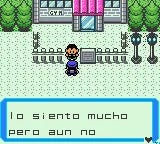
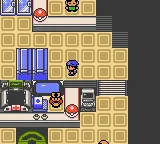
Chamber’s approach to the English-speaking public was finally confirmed by the contemporary internship that took place with the collaborative project with Mateo, i.e. the reboot of the latter’s first unfinished masterpiece, Pokémon Sterling Silver the Ice Fury (2013-May 2014, lost), a hack ultimately abandoned whose components, either graphical or scripting ideas, converged both in the 2014 version of Pokémon Christmas and in the future Pokémon Ice Silver.
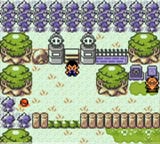
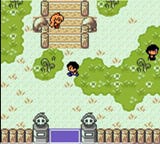
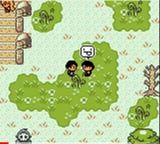
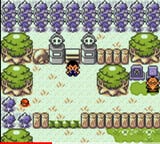
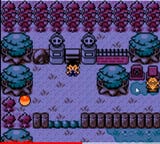
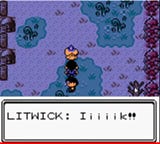
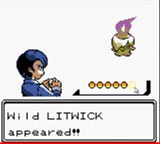

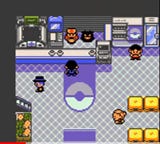
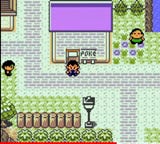
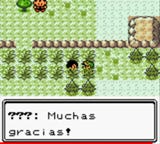
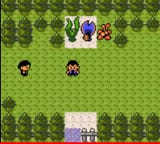
Meanwhile, another extremely promising hack by Chamber entirely made in the Spanish language was Pokémon Revolution (April 2013-september 2014, unpublished) (not to be confused with the homonymous hack by Colosseum Translations), which attempted a take on total overhaul (the first overhaul of the Hispanic world, jointly with the contemporary Pokémon Pilar), even though it would later be abandoned without ever being published due to the semi-retirement of the author a few years later.
WhiteFox
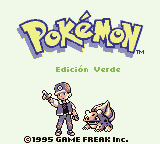
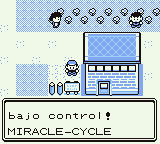
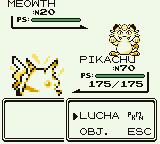
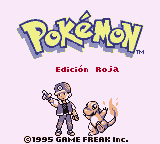
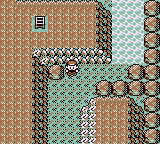
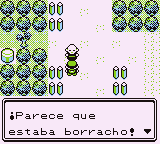
The idea of creating GB\C Hack ROMs in Spanish was largely popularized and stimulated by one of the most important translators and adapters of the decade, namely WhiteFox (of unknown origins), who created the first Spanish-language international adaptation of Japanese Pokémon Green (September 2016) which, in addition to restoring all the graphic components of that version, also tried to translate the censored texts from the Japanese version, following the example of what ShaneM had previously done – the first case in which this was implemented in a localized version. For several years the hack was also the most faithful adaptation of the original game ever made, even more so than in the English versions and localized versions. Years later, following what was previously proposed by HalfShadow and Sveeto, WhiteFox also created an adaptation for Japanese Pokémon Red, Pokémon Rojo 1996 (October 2023).
G0ld (Guatemala)
Nonetheless, the author destined to be most successful was the GB\C ROM Hacker who was the most hyperactive and involved in the entire community: known under dozens of pseudonyms (such as Neo Saiba and Ruki), the author from Guatemala G0ld proposed something that went well beyond the classic concept of restyle, while maintaining the basic theoretical aspects.

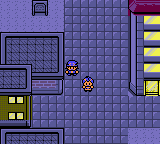
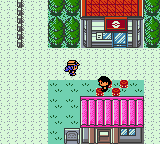
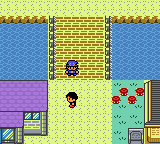
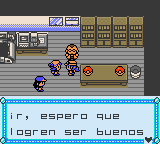
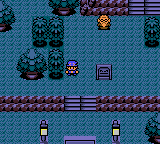
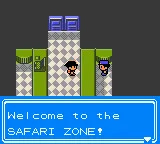
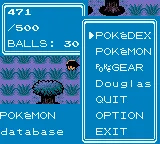
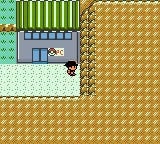
Taking inspiration from the most successful intuitions behind Pokémon Naturia, such as the introduction of elements taken from subsequent generations and a graphic update in turn inspired by more modern games rather than retro ones, G0ld created the equivalent of total Gen.3 hacks in Gen.2 with Pokémon Ice Silver (August 2013-April 2014), a hack that actually anticipated Chamber’s masterwork. In addition to the pioneering experiments at the time with the successful inclusion of the Safari Zone mode in Gen.2 (unfortunately not included in the latest demo version released), the radical innovation was to base the concept of hacking not on the hacks and games of Gen.2 but rather to bring the aesthetic aspect and practice closer to the games, and especially the hacks, of Gen.3. For example, the greatest innovation occurred at the Mapping level, created with the sophistication typical of Gen.3 hacks with experimental mapping rather than the cube-shaped and square maps of the Gen.2 hacks (which instead characterized even the real or presumed masterpieces of the time achieved): although incomplete, Pokémon Ice Silver retained the record of the best Gen.2 mapping ever achieved for at least 8-9 years, even experimenting with the hypothesis (never fully realized, unfortunately) of surfaces that could be divided into two levels of height, from above and below (as in the case of bridges with bodies of water beneath), as well as a much more convoluted path of unfolding the maps than in the originals.
In addition to various doses of profane (and obscene) humor but of a good-natured nature, this hack, although incomplete and with a final publication left mutilated and half-finished and consequently full of errors at the end of the Demo, nevertheless confirmed itself as a precursor on the course of mapping and tilesetting which serious hacks after it would undertake. The hack, entirely in Spanish, was also an excellent opportunity for ROM Hacking fans to encounter other linguistic experiences. Although he was hyper-prolific and his career actively continued, this was the only GBC hack that G0ld published in a playable version.
G0ld later revived the Ice Silver project by re-proposing it as a Gen.3 hack titled Pokémon GS Chronicles, which was eventually completed and released in June 2024.
KaenSoul (Chile)
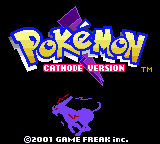

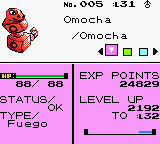
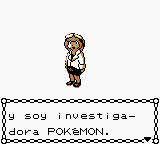
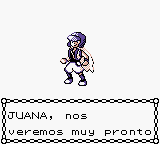
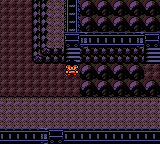
Nonetheless, the most formalist and pragmatic of the Spanish-speaking GB\C hackers was also the most creative (and witty) of all the formalist and pragmatic GB\C hackers of the rest of the world put together, namely the unknown Chilean ROM hacker KaenSoul, who created the traditionalist, competitive but challenging Pokémon Cathode (2017-July 2018), the first disassembled Spanish-language hack. Essentially complete in its scenario and basic elements but abandoned after the first playable Demo (perhaps also due to the public’s lack of understanding and disinterest), the hack was a perfect cross between the hacks of the English-speaking world “of the antipodes” (Australia, Great Britain), the most accessible German hacks, and contemporary Spanish-speaking hacks. Set in a new region with only Fakemon, beyond the futuristic and updated features, the hack offered very detailed and highly varied texts, even in internal environments, slightly anticipating the role of totally immersive Gen.2 hacks such as Pokémon Coral.
However, unlike any other Gen.2 hack, Cathode is above all the masterpiece of GBC spriting: with the complete creation of 250 front/back Fakemon (for a total of 500 sprites created by hand from scratch) with animations included (therefore a further 250 and more graphics on top), this was the most titanic Spriting work ever done, surpassing in intensity and quantity even the total graphics work behind hacks such as Pokémon Grape — KaenSoul took 18 months of continuous work (allegedly at 12-16 hours a day) just for spriting. Inspired and linked above all to “traditional” hacks such as Pokémon Bronze, the hack represented at the time of its creation the best (and only) hack based on Pokémon Crystal in the Hispanic world. Unfortunately, although the basic version of Pokémon Crystal later became the most popular basic version of all the others combined in the world of GB\C Hacking, this hack never achieved real public success (unlike its Anglophone counterparts) and was soon forgotten: no one wrote anything about it apart from the title and little else.
JavcDark (Mexico)
However, the first one to openly deviate from the idea of traditional restyle and overhaul was one of the most talented GB\C hackers in the Spanish-American world, the Mexican author JavcDark, also known as Xuukimoon, who was also the first to insert elements of Amerindian folklore into the world of Hack ROMs.
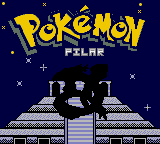
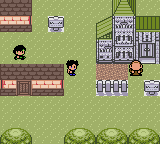
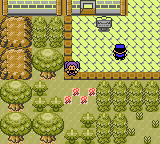
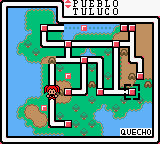
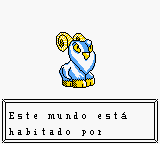

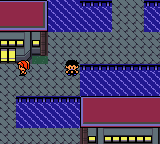
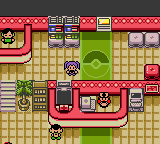
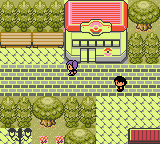
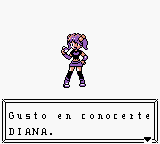
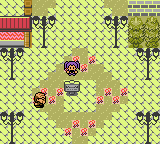
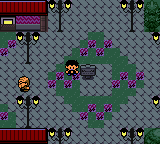
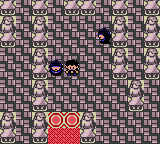
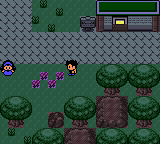
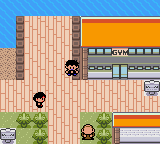
His masterpiece, and the Gen.2 masterpiece of Spanish-speaking ROM hacking, Pokémon Pilar (May 2012-June 2015), was a hack that went well beyond the purely stylistic and historiographical purposes of the original Gen.2 hacks that had been created up until that point. Started in Spanish in 2012, and first published in 2015, the hack later openly broke with one of the RPG genre’s holy taboos: the creation of bilingualism. Since its audience was also located outside the Spanish-speaking world, JavcDark had a brilliant intuition: to readjust the plot in order to justify the presence of two languages, that is, a “main” language (English) which was the key language of the main dialogues connected to the main plot and a “secondary” language that was actually primary (Spanish) which was actually the language of the rest of the game world as well as of the menus. This way, non-Spanish speaking players could learn some of the most recurring elements in Spanish in the game, without however getting lost in the continuation of the game thanks to the dialogues in English, as well as giving the possibility to learn more about the Spanish language by talking to the NPCs (which even allow access to various secrets, thus rewarding players who intend to learn the language).
The plot revolves around two U.S. girls studying anthropology traveling to Latin America to study Pokémon and the legends of the place (modeled after Mexico and Peru, in particular). Once one of the students is lost, it will be up to the protagonist to find her. The dialogues of the local NPCs (such as the hotelier at the beginning of the game) are entirely in Spanish, while those of the visiting professor as well as other key figures and tourists are in English, i.e., the dialogues connected to the main plot. Precedents of bilingualism and dialectism in hacks had appeared in the demos of works such as Pokémon Haiiro (in which Filipino and the Jejemon dialect appear), Pokémon Discovery (Gen.3 hack, in which Italian appears), and Pokémon Grape (which features Italian, Macaronic English, AAVE, and Latin, and in the final version also the Braille alphabet), even if previously it had mostly been comic expedients or postmodernist deconstructions, while in the case of Pokémon Pilar bilingualism was much more extensive and had an extremely functional aspect even justified by the underlying plot.
The hack, in addition to showing the best tilesetting set ever created in a GB\C hack yet (especially in the internal maps) and graphic virtuosity (including the graphically faithful reproduction of a church), also included the mechanics of time travel and an adventure set in wild, exotic, and unexplored places that truly immerse players inside it. The last publication dates to 2016 (to date, its continuation status whereabouts are unknown), and was generally appreciated by the public although not to the extent it deserved.
At this point, unlike all other widespread European-language scenes (French, Portuguese, German), the use of the Spanish language (or with other languages in addition to it) was now consolidated and accepted even outside of Spanish-speaking countries, also because the younger generations (for instance in the USA and Europe) were now much more accustomed to the language, both for study reasons but also for cultural reasons (for example, for contact with music and cinema). Unlike the German hacks of ten years earlier, which essentially remained a niche specialist phenomenon unknown to most (save exceptions), these Spanish-language hacks were instead able to literally unite two distant worlds – eventually becoming known even in countries as far as South Korea. It was inevitable that sooner or later it would emerge a major work that was finally the amalgam of all the cultures of the world around GB\C ROM hacking that was not in English.
Mystery (Spain)
After the famous example of JavcDark, this prophecy also came true in the case of the first generation of Pokémon games for an unknown and somewhat late Spanish-speaking author only known as Mystery, who can to some extent be also assimilable in the generation of Spanish-speaking authors contained in this chapter even though he debuted only in the first year of the following decade. The anonymous author, more similar to the “isolated” pioneers of the early days of GB\C hacking rather than to the others, created the first disassembled Gen.1 hack in Spanish, Pokémon Naranja ‘99 (November 2020), one of the best masterworks of GB\C ROM Hacking and the one that was most explicitly linked to the History of GB\C Hacking.
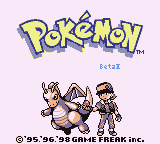
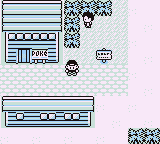
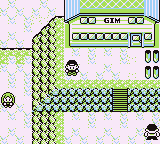
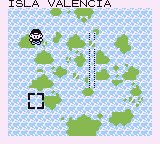
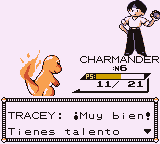

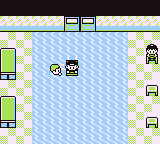
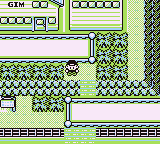
Vaguely inspired by the first edition (which in the meantime fell into disrepair and needed restoration) of the GB Hack Encyclopedia, in a period of banal “improvement” hacks that aimed to restore the unpublished versions of the official games in increasingly monotonous ways, this hack proposed instead a hack “for improvement” which aimed to create an explicit homage and “open” restoration (bordering on the philological but in reality completely original) of the unpublished and lost versions of the unofficial hacks, especially those based on the Orange Islands.
The hack, despite its declared derivative intentions, was the most original GB hack ever conceived, totally distant from the purposes and aesthetics of other hacks before (and after) it, a true reversal of the concept of “traditionalism” and how the revival of a tradition can also be extremely free. In fact, this hack, expanding on Dtyler’s intuitions, recreated the idea of “open world” that had been experimented in very few hacks before it (and ahead of the publication of hacks such as Pokémon Crystal Clear and Factory Adventure) but, unlike the hack of the master and creator of the overhaul, this one extended the opening not along two opposite directions but along all possible directions and routes (the Town Map, unique in its kind, has no routes but only islands), thus making the GTA-esque claims of hacks such as Crystal Clear mere sensationalism for teenagers.
The hack was also openly inspired by all the most paradoxical and neglected characteristics of the hacks that had preceded it, including the use of the surfboard (O.I.A. and Orange Islands by BG and Neo), entry into buildings via maritime via Surf (the aforementioned Orange Islands and Crystal World) extended here however even to the continuation of swimming inside the building itself (for the first time), the use of shortcuts to complete dungeons or explore hidden areas in advance (Pokémon Grape), and the introduction of a pseudo-Rocket sidequest that alternates between internal and external dungeons, complicating what was previously proposed by Pokémon Molten. In addition to this, the hack remained essentially faithful to the characteristics of the basic Adventures in the Orange Islands cartoon (four medals, the Crystal Onix, the key characters, etc.), creating however, unlike PiaCarrot’s Pokémon Orange, a completely stand-alone adventure that wasn’t a direct transposition of the cartoon. More than a tribute to the original games and characters, this was a shrewd tribute to that entire generation of misfit ROM Hackers who had pockmarked and transfigured those games and characters beyond any form of recognition.
3.4 France and Belgium, 2010-2020
A much more modest GB\C ROM Hacking scene around Pokémon sprouted in French-speaking countries, although it took at least ten years before local production aspired to the goals of the other hacks and authors previously mentioned.
Early French Precursors
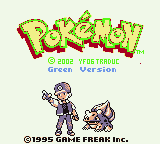

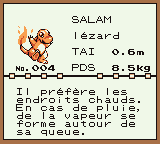
French ROM Hacking was born in the late 90s, always around the field of translations: the first French Pokémon hack was in fact the French adaptation of the Japanese Pokémon Vert (August 2002-April 2004) by YF06, a hack that, after several erroneous and incomplete versions, was finally completed in 2004, although this last version was lost for several years before the “Counter-Leak” of 2022-23. Unlike other communities, the French GB\C ROM Hacking remained mostly associated with translations, both of other games and of other hacks, as attested by the French translation of Pokémon Brown from 2014-16.
Nonetheless, in France there were already cases in which someone went well beyond the concept of translation, especially when in July 2004 a group of collaborators led by Krys3000 founded the PRAMA Initiative, the very first amateur experimental research center on game glitches of Pokémon, anticipating the creation of Glitch City Labs by a couple of years.
In any case, the first French author to gain a certain fame as the first author of a restyle hack was Gencives Suintantes, who with his Pokémon Royal Blue (July 2010) proposed (with a ten-year delay) the equivalent of the “upgrade” hacks by Jeremy. Moving on to Gen.2 shortly thereafter, he attempted to create similar hacks, although they were mostly banal patches that changed wild Pokémon rather than hacks in the strict sense.
Cinaed (Belgium)
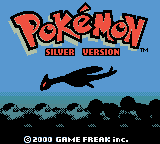
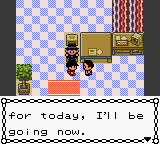
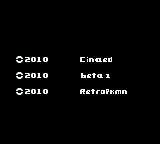
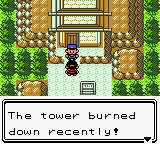
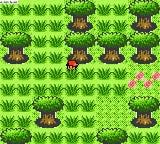
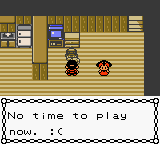
However, in the same years a Belgian author called Cinaed created the first national work by taking up, continuing, and expanding a restyle hack of Gen.2 interrupted by Kenny the Amazing, namely Pokémon Gallium (January 2010, lost), one of the rare hacks based on Pokémon Silver, also of modest claims, which however included many more changes, and which attempted (first) to re-insert the Safari Zone in Gen.2 (without completely succeeding). Unfortunately, the original author moved on to Gen.3 (creating the equivalent hack of the same name on that platform), while Cinaed moved on to oblivion.
Sveeto

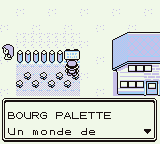
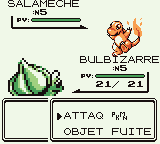
Recovering the tradition implemented by YF06, Sveeto created three adaptations for the three original Japanese versions, among which Pokémon Vert (October 2017) stood out, i.e., the first complete adaptation of the French original according to the purist line inaugurated by SkeetendoInc., ShaneM, and WhiteFox. Following the example of HalfShadow, who in 2015 had created a “Westernized” restoration version of Japanese Pokémon Blue, Sveeto had moved on to the next most logical step, namely that of re-adapting all three versions, effectively becoming the first GB\C ROM Hacker to have proposed adaptations for the three basic Japanese versions.
Forgotten Authors: MikaZ
Unfortunately, most of the French GB\C hacks from this period remained unpublished and would be lost track of over time. For example, in 2015 MikaZ, more famous as Miiou, attempted the first French GB\C port-over with Pokémon Diamant Omicron (April 2015, unreleased), a port-over of Gen.4 into Gen.2 (a bit like what happened with Pokémon Berlitz 7-8 years earlier) however based on French Pokémon Silver. After abandoning the project, Miiou became famous as a Youtuber and popularizer of Hack ROMs.
Forgotten Authors: DrHerculet a.k.a. Myth
The most visionary French or Francophone author of this period, however, was the one who went most unnoticed of all (and who was most unfairly derided), namely DrHerculet, also known as Myth. Starting with the Gold base (and, later, apparently moving to Silver), its debut hack, the creepy Pokémon Tower (July 2013) was much more than a simple restyle: in addition to being the first French Gen.2 hack, it was also one of the first creepy hacks ever made, a monochromatic visual delirium (despite the colors of the base version) that transported elements of Gen.1 into Gen.2 in a delirious horror adventure based on glitchy maps, foggy tombs, and bloody game screens. Fiercely criticized by the French community for having created the hack in English, and shamefully snubbed by the U.S. community for having created a horror hack instead of yet another banal “serious” hack, he apparently renounced a newly published Demo and disappeared forever from the world of ROM Hacking, perhaps disappointed by the toxicity and profound intolerance of the environment on both northern shores of the Atlantic Ocean.
Axiss
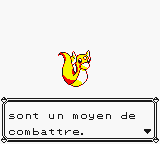
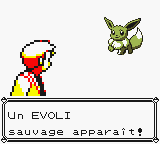
The most popular GB\C French hack of the decade was Pokémon Évoli (October 2018) by Axiss, the first French hack (in the native language) based on French Pokémon Yellow, a (unfortunately mediocre) hack that changed the starter Pokémon, the item found on the PC at the beginning of the game, and little else. At least the basic idea would leak out a few years later even into the official franchise, namely when Nintendo came up with the idea of creating a remake of Pokémon Yellow with a parallel title sharing the same premises.
Forgotten Authors: Unknown & Anonymous Authors
Meanwhile, the Francophone ROM Hacking community, both European and American (e.g., Quebec, Guyana) expanded, and during the 2010s it began to collect and catalog hundreds of ROM Hacks, even the most unknown ones: if many of the first hacks of The 2000s were saved from oblivion forever it was also thanks to their contribution. This happened even in the most “extreme” cases. For example, in 2016 what could be the worst GB hack ever made (by an unknown author, presumably U.S. or Canadian) emerged from a French download server, the delirium tremens dedicated to the Insane Clown Posse of Pokémon Super Dragon (October 2016, unknown author), a botched lo-fi Z-grade parade set in the famous “Dark Carnival” and which fails (miserably) in all fields of ROM Hacking, from mapping to tilesetting through erroneous texts, and which could accidentally be considered an example of pop-art mixed with the no-hacking of Dadaist affronts such as Pokémon Crystal World. The hack is in all respects the video game equivalent of the movie Plan 9 from Outer Space, without there being any intention to do so.
DarkSill
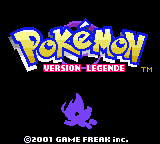
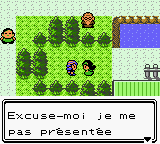
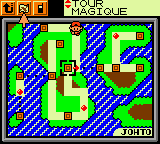
Perhaps much less eccentric but decidedly more enterprising and more gifted, DarkSill (sometimes erroneously listed as DarkSkill) was the first ROM Hacker to create an overhaul hack in French and the first to create a disassembled French hack with Pokémon Légende (January 2020), the unconsciously spiritual successor of Perros VS Aves but in French and with much more technical-formal competence. Between nice, personalized events, and subtle humor, the neo-traditionalist hack confirms itself as the heir of both the competitive genre as well as the tradition of sophisticated comedy represented by hacks such as Pokémon Bronze and Crystal Redesign which play on the mapping level as well as on the purely dialogue level.
2010s French GB\C Hacking: To Recap
Although the French GBA scene was one of the most significant globally between the late 2000s and the 2010s and could cross international barriers, the same cannot be said in the case of the GB\C scene of the time. The only (major) limit of the entire Francophone GB\C experience in the first decade of the diaspora was the excessive zeal and attachment to traditionalism of its audience: the marked hostility to the use or even the fruition of hacks in other languages (for which translation became indispensable first and foremost) as well as the hostility towards more eccentric forms of expression compared to the most fashionable ones were always the disturbing elements that prevented the entire community from taking off, maintaining the flights of imagination contained within the limits of the departure airport.
Even though half of this early period was mostly marred by skepticism toward eccentricity in the case of GB\C, thanks to the Francophone communities of ROM Hack fans and players new approaches and horizons for GB\C hacking would open by the next decade.
2020s French GB\C Hacking: After the Rain
Following the Pandemic there was a long stasis: in the first years the only product that emerged was the very modest restyle Pokémon Brun (November 2021) by Tronsh, a simple restyle that re-proposes the original game with Eevee and Pikachu swapping roles, a hack which was originally based on the English version and later also re-proposed in French – basically, a bad carbon copy of Pokémon Évoli, with even less changes.
Xatros
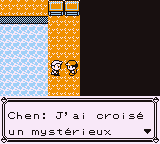
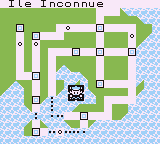
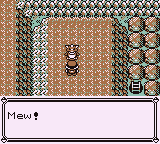
However, surprisingly, in the new decade the opportunity to relaunch French GB\C ROM Hacking as attempted by DarkSill was finally offered by Xatros, who seized the opportunity and offered the “apocryphal DLC” of Pokémon Bleu Abysse (April-July 2024), an appetizer of the notable and abysmal improvement possible above what could be expected from contemporary Gen.1 hacking, this time using a French starting base instead of an English one. Seen in the general context of conservative and competitive hacks of the period as per public demand, the hack nevertheless differentiated itself thanks to its additional sidequest for the capture of Mew, which employed a considerable effort in terms of mapping, scripting, and ASM – although limited to that aspect only.
The first GB\C hack to finally succeed with the French public since Gencives Suintantes, this small but relevant first attempt can leave hope for future attempts in the scene: with this de facto technical demo of its possibilities, the author demonstrates how it is possible in the future to actually arrive at the GB masterpiece in French simply by applying oneself more deeply in integrating this type of changes to the entire game rather than to a single portion of it. Furthermore, the attempt to increase the level of interest (and technique) for French GB\C hacks is admirable. But, more importantly, beyond the underlying technicality, the addition also demonstrates, albeit in a veiled and cryptic way, a desire for interpretative freedom from the point of view of the underlying mood (especially in the dialogues and in the new Oak event itself at the port) that cautiously attempts to distance itself not only from the official games but also from other hacks of the period. Before then, no French-speaking author had ever dared so much in terms of Gen.1 hacks.
3.5 Central, Northern, and Eastern Europe, 2010-2019
In the case of the rest of continental Europe, the scenario was much more fragmented and confined to single significant experiences rather than actual movements.
● Rainbow Wings of Desire, Germany and Austria, 2010-19
What had been the most historically significant experience of the avant-garde, namely the German movement, never fully recovered: after 2006 the entire scene was virtually either in exile or kaput. Over the course of the decade, except for an RPG project and a few very respectable GBA Hack ROMs, retro hacking was practically completely forgotten (or kept quiet) by the new generations, perhaps also due to the weight and influence that the previous generation had about everything else about ROM Hacking. What little was achieved in the GB\C field in this period was mostly dedicated to translations, as happened with the German translation of Pokémon Prism. Nonetheless, during this period, a younger generation of German fans kept the interest in GB\C Hacking alive. We will have to wait for the 2020s for a substantial revival of the scene.
Nonetheless, during the decade at least one German GB\C author emerged and made his debut: Ebernacher90. Starting with simple restyle hacks, Ebernacher90 would become a veteran disassembler over the years, dedicating himself not only to Pokémon games but more generally to various GB\C titles. Although his career did not reach the heights of experimentation achieved by the German avant-garde community of the early 2000s, he nevertheless made very important contributions that led to the disassembly of the German versions of the Gen.2 games. Programmatically favoring the unjustly overlooked Pokémon Silver (both the German and English versions) as his favorite base version, Ebernacher90 debuted with an obscure German-language hack based on German Pokémon Silber, the restyle Pokémon Vulkansilber (October-November 2016), which was later re-released 5 years later in a disassembled version, this time in English. The hack confirmed the author as a stylistically traditionalist, and as not very interested in changing the graphic and semantic aspect of the original game, opting instead to try his hand at ROM Hacking on a more technical level, with the occasional contribution of some mapping changes.
Unfortunately, despite his immense talent (actually quite considerable, considering his future technical endeavors), Ebernacher90 wasted time with a series of jokes or hacks that were not very imaginative, such as the troll hack Pokémon Windows World (December 2016), a silvery and ephemeral hack made only of product placement within the original unaltered game, or Pokémon Red Kaizo (2016), that is, the original game with the levels of the opposing Pokémon raised.
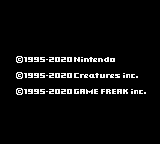

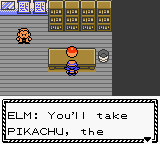
After this degenerative phase of reflux, a two-year period followed in which the author seemed to lose interest in GB\C ROM Hacking (perhaps also following the take-down of Pokémon Prism), a period in which he vented his disappointment by creating the RPG Pokémon Allworld (2018), which however retained a visual aspect similar to the Gen.2 games, actually demonstrating the author’s continued interest in retro hacks. Not by chance, this last project was re-proposed in disassembled GBC format in the eponymous Pokémon Allworld (November 2020), a hack based on Pokémon Crystal that attempted to add all the Pokémon and all the regions, but for real: following Koolboyman’s theoretical ideas and following in the footsteps of Red Cabusao, the author expanded the PokéDex beyond 255 species, reaching 310, especially through an experimental decompilation device that allows to extend the limits of the “lists” of Pokémon Crystal, thus allowing the insertion of more Pokémon, objects, and so on – thus anticipating in its intentions the future Pokémon Johto Legends. But alas, the author remained skeptical of any form of tilesetting or mapping that would make the game’s appearance differ from the originals, a sign of the influence of the elite US GB\C community, purist and conservative. If Ebernacher90 had also invested in creating a stylistically and emotionally original product on that basis, Pokémon Allworld could have easily outclassed the German (and not only) masters who preceded it. Instead of minting a Pokémon Silverstar of 2020, the author preferred to resign himself to a Pokémon Crystal All “310 Edition” from the era of terrible rebalanced hacks suitable for the pandemic audience. Never in the course of History has there been such an abjuration and renunciation of talent.
Later, the author outlined two disassembled projects in the post-pandemic such as Pokémon Crystal Spirit (unreleased) and Pokémon Gel (unreleased) (the latter based on Pokémon Yellow), projects that are currently unreleased and under construction.
Surprisingly, regardless of geographical origin, Ebernacher90 was much more in tune with the traditionalist US ROM hacking movements and developments of the period than with the anarchic and avant-garde past of his own backgrounds – a clear sign that the new generations had forgotten, if not ignored, their own past. But, above all, this confirmed three important developments in the global GB\C ROM hacking landscape of the second half of the 2010s:
The integration with the more traditionalist US technical and stylistic purposes.
The consequent loss of originality, even just at a visual level, for the American dogmas, and...
The establishment of a progressive global indifference towards all those projects that were not born through disassembly because they had preceded it, even towards the German and American masterpieces of the early 2000s.
Ebernacher90 in any case remains a talented author and ROM hacker of all respect, even though the development of his career confirms the phenomenon for which the organization in open source engineering communities ensure that only the strings of code circulate and not the artistic and cultural ideas that led to their creation on a historical level – even before the engineering level.
Unfortunately, all of this further confirms how the experience of the avant-garde German ROM Hacking of the beginning of the millennium was definitively dead and buried on an aesthetic level: to all intents and purposes, it was a further confirmation of how the world of the post-Prismatic digital computer counterculture was progressively turning its back on the human side of creativity in favor of the purely arithmetic one.
● Czech Republic, 2010-2020
Much more significant and relatively lively in this period was the contribution from the rest of Central Europe. The most unique experience of the area in this period came from the most experimental and enterprising of the hyper-technical ROM Hackers: Sanqui, a ROM Hacker originally from the Czech Republic, later transferred to Estonia. Sanqui was above all a fan of the glitches of the First- and Second-Generation Pokémon games through the Glitch City Labs community, which he attended since the very beginning and to which he would collaborate enormously. Having learned ASM through the German and U.S. avant-garde, he used that knowledge not so much to create Hack ROMs but rather to understand the very nature of Glitches and the internal functioning of games. Hyper-analytical to the point of personal obsession, Sanqui was perhaps the only person in the world other than the creators of the Pokémon games themselves to have memorized the entire contents of the ROM and RAM memory of the first six Pokémon games and to remember all the offsets and pointers from first to last from memory.
Finally trying his hand at opera, Sanqui devoted himself entirely to the dissection of the code, in particular when emulating the RAM, and in doing so in the summer of 2010 he made perhaps the most important discovery in terms of glitches: the Coin Case Glitch of Gen.2 games, a method that when well exploited allows arbitrary manipulation of the game in real time, a method that he managed to fully exploit in August 2013 when he delighted in demonstrating to the public how to modify the game in real time simply by playing it rather than hacking it.
Anticipated in intent by the pioneer of glitch research TheZZAZZGlitch by just a month, Sanqui still has the milestone of being the first to have discovered a feasible method of RAM Hacking for Gen.2 games.
The only Pokémon hack Sanqui published during his militancy in the GB\C counterculture was Pokémon Randomized Red (June 2014), a hack that extended the concept of randomization of Pokémon Red & Blue first epitomized two years earlier by Arty\Artemis (by means of an external program) and now embedded within the game itself, a notable technical achievement that confirmed Sanqui’s principal interest in programming rather than in aesthetics.
In the meantime, thanks to a contingent of Central European hackers from the Czech Republic, Poland, and other countries in the area, Sanqui dedicated himself between 2010 and 2015 to the translation into English of the two versions of Keitai Denjuu Telefang, that is, the two games from which the famous Pokémon Diamond & Jade bootlegs were obtained. Eventually, the team so assembled succeeded in fully completing the translations in August 2024. (Read more about it here).
Following his precious technical-scientific discoveries and his translation, Sanqui dedicated himself to some sporadic but valuable collaborations on Gen.2 hacks, for which he developed some futuristic features, such as for example the use of parallax graphics in Gen.2 (simulating what occurs in Final Fantasy 4 as well as in the Gen.4 games). He also sketched out a plan for a Gen.1 hack between 2016 and 2019, although he ultimately gave up due to being uninterested.
Finally, Sanqui, having moved to Estonia, took a semi-retirement from the world of amateur video games to dedicate himself instead to IT development projects, at least not before having provided a final moving interview to the public towards the end of 2020 on the importance that the Glitch City Lab had during the “alternative” history of Pokémon, as well as on his experience as a researcher.
Cold, methodical, calculating, lethal, and impersonal as much as the Program Counter of the Game Boy that he had studied so closely, Sanqui represented the most extreme and robotic (bordering on the inhuman) aspect of the passion for the technical functioning itself that not the artistic soul that exploits those cosmic laws: he was the furthest thing from the artist and more similar instead to the purely arithmetic spirit of the continuum mathematician, perhaps also as an effect and legacy of a society (that of the Czech Republic of the “Normalization” communist occupation era) that forced men first and foremost to be formidable machines. Sanqui, rather than merely being one of the pioneers of Glitch Hacking, represents above all the demonstration that the importance of contributions does not necessarily derive from the publication of a product or from the compromise with a pre-established practice: the magnitude of his impact on the entire ROM Hacking was inversely proportional to the number of works he published.
● Poland, 2010-2020
The rest of the area, in the period in question, was dotted in the GB\C field instead by amateur but hardworking authors, often dedicated to translations. For example, the Polish ROM hacker Marysiamzawka completed the Polish translation of Pokémon Red and Blue that he had started in 2014 in August 2016 with the help of a disassembler.
However, Polish GB\C ROM Hacking had much more remote origins: it also originated between the end of the 90s and the beginning of the 2000s around translations – a fact that is even more surprising if we consider that, less than a decade earlier, the country was still in the context of communist regimes (albeit ending by then) and was still occupied by Soviet occupation troops. The first to inaugurate Polish Pokémon Hacking were therefore two translators, respectively the translators who made the translations of Pokémon Red and Pokémon Gold in Polish.
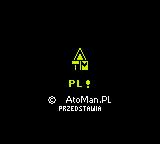
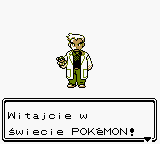
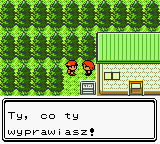
The first was AtoMan PL, who made a Polish translation of Pokémon Gold in 2000 based on the Japanese version instead of the English one, which had not yet reached the shops at the time of the translation’s publication (a bit like what happened in the analogous contemporary case of Philip Reuben’s English translation). To date, we do not know whether AtoMan PL translated directly from Japanese to Polish or, as would seem more likely, whether he instead translated the game starting from the amateur English translation by Philip Reuben or the amateur German translation by Filb.

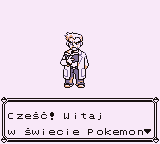
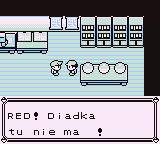
Of the two Polish founders, the second was Cin25, who made the first translation of Pokémon Red into Polish around 2001, this time based on the international version, which was however a “spurious” version including zaniness and vulgar language with a lot of poetic license.
In any case, from then on for about 15 years there were no further GB\C hacks by Polish authors, and in any case to this day there is no direct evidence of hacks that are not translations.
● The Netherlands, 2010-2020
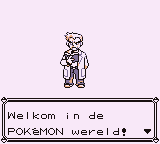
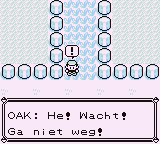
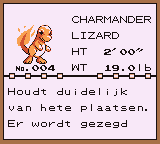
In Holland, GB\C ROM Hacking arrived immediately, given that the Dutch translation of Pokémon Red & Blue dates to 2000 (December 1999-June 2000, author unknown).
However, in the context of international ROM Hacking, at least one author appeared who attempted to approach Pokémon Hacking: the ROM Hacker and amateur electronic musician Yoramrw, otherwise known as Gatarda or TheMoneyOfTheWorld, who was the first Dutch ROM Hacker to debut with a restyle hack (in English) based on Gen.2 (May 2013, unreleased). His Gen.2 hack disabled colors so that the game would only be in bi-color mode, and it included the unused Gen.2 beta tilesets. Yoramrw also attempted a Gen.1 hack, without success. Crushed by the criticism and toxicity of the community, he therefore dedicated the remaining part of his gaming career to the creation and adaptation of music for the Game Boy, indirectly making him the pioneer of the Pokémon ROM Hacking GB\C Musical genre. “Hypothetical” hacks such as Pokémon Psy and Pokémon Pear (2013, unreleased) first and foremost demonstrated his versatility in the world of chiptune music and amateur electronics. Intoxicated by the reactionism of the elitist GB\C community, Yoramrw ended up becoming (and remaining) reactionary himself.
● Norway, Sweden, and Denmark, 2010-2020
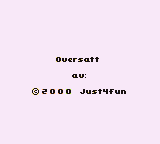
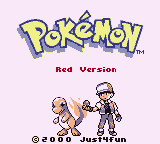

Scandinavia remained an anomalous case in the European panorama: the area had churned out the pioneers of Hacking from continental Europe, as in the case of Just4Fun who already in the Year 2000 had created one of the first European GB\C Pokémon hacks, i.e., the translation in Norwegian of Pokémon Red (February 2000) and Blue (May 2000).
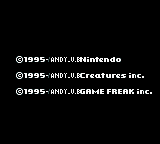
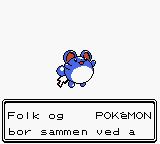
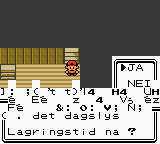
The following year, in 2001, SSJ Andy translated Pokémon Gold into Norwegian.
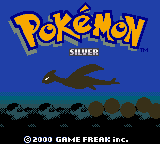
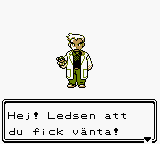
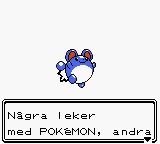
For its part, Sweden had also seen the birth of Pokémon Hacking around the beginning of the 2000s, namely when TheTranslators translated Pokémon Silver into Swedish around 2001.
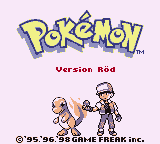
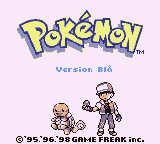

However, it was precisely from the translation projects orbiting around Sweden that one of the most controversial and famous ROM Hackers of all time would emerge towards the end of the decade, namely the one known mainly as Ganix, more famous as the author of the 2020 Giga Leak and the first indiscretions of Pokémon and Nintendo material leaks towards the end of the decade. In any case, outside of his very famous stunts, Ganix reappeared briefly mentioned in May 2023 as a contributor to the project to translate Pokémon Red into Swedish by Salterfall and Frezgle.
However, despite this, neither in Norway nor in Sweden, although there were numerous ROM Hacking communities scattered throughout local social networks (especially the Swedish-speaking ones), there were any further significant publications, although Swedish ROM Hacking fans contributed greatly to the spread of tools for Gen.2 games created by the German avant-garde scene.
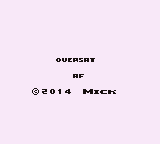

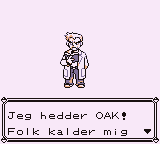
On the other hand, the Danish GB\C ROM Hacking scene started in earnest during the 2010s, namely when Mick KN published a (partially unfinished) Danish translation of Pokémon Red in 2014, using the old-fashioned binary method. In the following decade, Lailaboy started in November 2022 the translation of Pokémon Red and Blue into Danish, this time by using a disassembler. However, this project was abandoned in March 2023, eventually to be picked up again in 2024 by Mick KN, who restarted it from where it was left.
● Finland after Miksy91, 2010-2020
In Finland, where the titanic figure of Misky91 exerted a notable influence thanks on his masterpieces, a modest GB\C amateur scene developed, mainly made up of fans, although on at least a couple of occasions there were also hack authors.
The most modest of these, LateNightHacker, created the simplest hack of Pokémon Silver ever deliberately conceived, the “technical” restyle Pokémon Secret Friendship (July 2013) which limited itself to balancing a few moves and changing a few evolutions, a very simple rebalancing (in formally and technically perfect reality) which was ignored at the time — but which, had it been published ten years later with a different title including “Gold” or “Crystal” in the title, would most likely have been considered one of the greatest masterpieces of ROM Hacking ever by an adolescent audience dazed by the level of nonsense circulating on real-time online chat boards (essentially anticipating the average ROM Hacking trend of the 2020-2024 period by ten years). Strangely, LateNightHacker never became as famous as the “authors” of ten years later who would have done the same exact things as him (and, possibly, even much less) even making use of much more accessible and advanced means such as the disassembly.
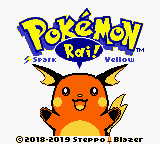

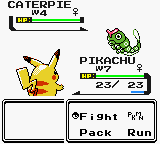
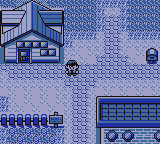
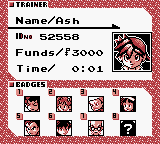
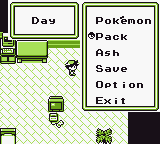
However, surprisingly, it was precisely from this local scene that an author such as Steppo Blazer emerged, who was able to create the most advanced and radical hack of Pokémon Yellow up to that point, namely Pokémon Spark Yellow (November 2018-April 2020), a disassembled hack that introduces expanded graphics in the tilesets, running shoes, day/night split, experience bar, as well as the ability to fly in the maps with Pikachu. The hack was graphically and functionally more like a Gen.3 hack than the usual restyle, and in fact represented the generational successor to Yellow Reborn in the era of hacks pumped up to a total overhaul. Unfortunately, traces of the author were lost in the first months of the Pandemic (he was stuck in Italy), and since then the hack has remained incomplete: all we have is a “demo” version (with some errors as it was never completed) compiled by fan starting from the disassembly.
● Eastern Europe, 2010-2020
It is a disservice to speak of Eastern Europe as a single entity: in reality, it is a series of cultures that are quite different from each other. To be fair, this also applies to the rest of the world and continents. However, even in Eastern Europe there was gradually beginning to be a rapprochement with the rest of the world and the counterculture, especially through the acquisition of English and, above all, the spread of the Internet. Nevertheless, with some notable exceptions, most of the proponents of the countercultural scenes in the area were either part of contexts of diaspora and pan-European exchange or of contexts so isolated and exceptional that there is no way to document those experiences. This reflects not so much the absence of talent (which in the countries in question abounds, as amply demonstrated in the past by contributions from the major arts) but rather the non-existence of European integration and cultural and subcultural exchange on an amateur and voluntary basis outside of institutions and official culture: this is the real Achilles heel of Europe in the short and long term, and perhaps one of the real reasons for its “decadence” and “irrelevance” (real or presumed).

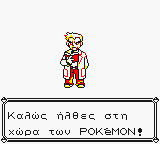
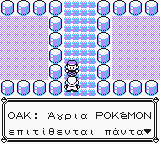

The only concrete experience in the field of GB\C hacks of Pokémon found and documented in south-eastern Europe is in Greece: more precisely, between 2000 and January 2001 a team of Greek ROM Hackers dedicated to translations, led by GTI Badge, created an amateur translation into Greek of Pokémon Yellow, which (obviously) also introduced the Greek alphabet.
In the Balkan area, video game modding was extremely popular in the area, particularly in Romania, especially in the case of racing car video games and, above all, shooters (among which we remember the famous Counter-Strike mod entitled CS Bestial, one of the first to be created). Another famous example was the GTA Mamaia mod (2007) by StarVG based on Grand Theft Auto Vice City, a mod that transformed Miami into a famous Romanian seaside resort and which combined advanced 3D modeling with excesses of bizarreness and assorted nudity of all random kinds. Hackers in the area were more famous for actual cracking than anything else, with the most famous case being that of the Romanian hacker who successfully broke into the White House PC as a joke (and, as a reward, was hired to work in there). Unfortunately, despite the liveliness and creativity of the scene, there is to date (2023) no trace of Pokémon hacks carried out there, let alone of GB\C hacks carried out, although GB\C (and GBA) ROM hacks of Pokémon also enjoyed moderate success in Romania during the 2010s.
In the Baltics, ROM hacking was (and still is) quite popular, especially in the case of Pokémon. GBA hacks were even created, among which one of the famous examples was the zany and postmodern hack Pokémon DAVD Edition (2017) by Shaktar, an Estonian “expatriate” hack made in Italian and set in Tuscany, the first to introduce football imagery and voice audio samples of authentic human voices (mostly random shouts in unknown languages). Apart from this experiment on comedy and its metaphysical implications (which belong to another book more specifically dedicated to Third Generation Pokémon Hacks), and leaving aside Sanqui’s move to Estonia, there are no traces of GB\C Hacking productions in the three Baltic countries in the 2010s.

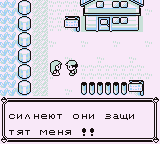
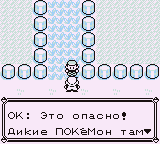
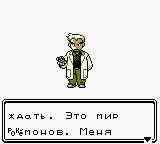
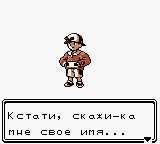
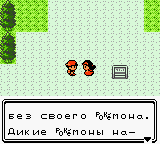
Following the war developments in the 2020s, tracing the History of Pokémon ROM Hacking (especially in the case of GB\C hacks) of Ukraine, Belarus, and Russia has become far too difficult. The only certainty is that in the Year 2000 (presumably in December, according to the dates), the ROM hacker Tolik created the Russian translations of Pokémon Red and Blue, while the Russian translation of Pokémon Gold (presumably by the same author, although it is not certain) dates back to the following year, in 2001. As per linguistic practice, these translation hacks introduced Cyrillic text characters instead of the Latin alphabet.
● The European Countercultural Archipelago: a Summary
The main obstacle for the development of various scenes in the European ROM Hacking panorama was not so much the language barrier as the fragmented nature of information, mixed with the monopoly of free time: as the GB\C diaspora arrived later than the GBA diaspora (which arrived in the world before the arrival of algorithmic social networks listed on the stock exchange), when it finally arrived across the continent the phenomenon of “message walls” had already established itself as monopolizing among young people, essentially demotivating that tortuous and insidious hobby in favor of real or supposed such instant “social” gratifications. The slow and demanding nature of ROM Hacking instead requires efforts that generally bear fruit only in the long term rather than the short term, viz the antithesis of electronic social media binging.
As the Third-Generation Italian ROM Hacker IvanFGK once said, “ROM Hacking is terrifying: ROM Hacking digs into you and spits you out, it is an art of patience and endurance, which requires a lot of time and willpower”. Never has there been a more accurate description of what it was.
3.6 South Korea, 2010-2020
Click here for the Chapter on South Korean GB\C Pokémon hacks.
3.7 At the End of the World: Emerging GB\C Scenes, 2010-2020
Once the main non-English-speaking scenes of ROM Hacking GBC emerged and individual authors appeared in the main geographical areas in sight, the technological progress achieved in terms of manufacturing at a lower cost meant that the phenomenon slowly percolated even in more remote areas of the world that had previously been completely overlooked.
This process was encouraged more than anything else during the years of the 2020-2023 pandemic: however, even before then, there were isolated experiences scattered across the global panorama that anticipated this new phase in the history of ROM Hacking.
The Arabic World and GB\C Pokémon ROM Hacking
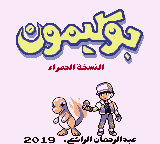
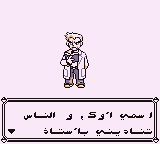

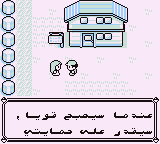

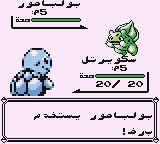

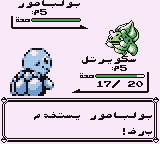
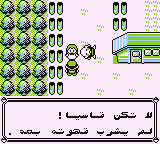
The most notable example in this sense was that of Diariko, who created the Arabic translation of Pokémon Red (August 2019), then updated it over the following four years (but without it being fully completed until then).
Chinese GB\C Pokémon ROM Hacking in the 2010s
During this period, the rest of the world outside of the previously mentioned countries attempted the same translation mission as the ROM hacking pioneers of the 1990s and early 2000s, albeit with more sophisticated means and greater knowledge — particularly in China, where multiple translation attempts occurred.
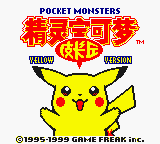
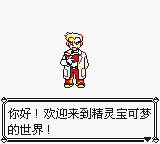
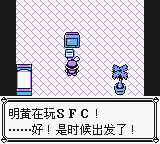
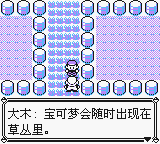
Among these, the first notable one to emerge during the 2010s was the Chinese translation of Pokémon Yellow (2017) by a team known as CKN, which also introduced a vast amount of experimental and pioneering ASM functions for managing ideograms in a more sophisticated way compared to the early Chinese translations from the late 1990s and early 2000s.
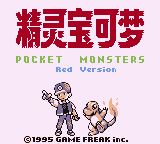
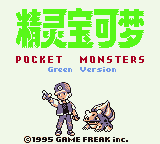
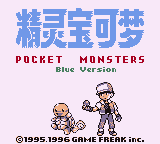
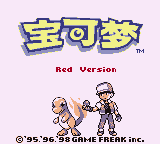


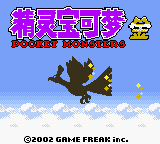
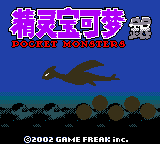
Later on, at the beginning of the next decade, these premises saw a further evolutive step when a Chinese team lead by TomJinW carried out the Chinese translation of all the seven main GB\C Pokémon games (October 2023), adapting both the Japanese and English versions whenever they differed significantly (for a total amount of 9 translation hacks).

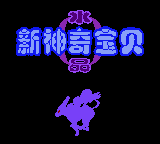
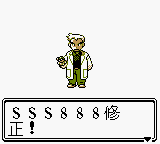
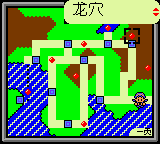
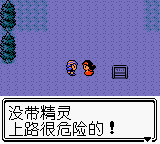
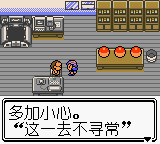
Along these translation premises, the closest thing that ever came close to a non-translation hack of GB\C Pokémon games was Pokémon New Pocket Crystal (2017) by SSS888, officially a Chinese translation of the Japanese version of Pokémon Crystal (the latter functionally different from its international counterparts) which also made a few changes to the title screen and wild Pokémon.
Japan, 2010s
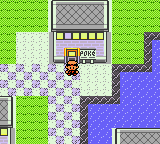
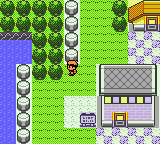

The one exception in this regard during the 2010s was the sole surviving Japanese GB\C hack online, for instance the “tech demo” Pokémon Rayquaza Version (April 2012) by “exile” Lockerz102, a quasi-overhaul (based on the English version of Pokémon Gold rather than the Japanese one) that also introduced new events and the use of a custom save game to play the hack as intended.
In general, regardless of the areas in which it emerged, GB\C Pokémon ROM hacking had almost always followed the same steps: a translation of the originals if there were no original bases in the languages in use in the area, the phase of the first simple restyle, a crazy and/or esoteric reflux contemporary to an avant-garde experience, the arrival of the first overhauls and, finally, the multiplication and diversification of the scene and genres. With the notable exception of the Chinese GB\C bootleg scene and that of the very unknown and undocumented Japanese GB\C scene (extremely underground and elusive compared to the GBA scene), the only countries in which this evolution did not occur according to the stages listed here were those in which there were already basic language versions, even if not all were available.
Obviously, all these characteristics of all the scenarios of the hacking “Diaspora” would have ended up being very beneficial and giving new impetus to the “traditional” Anglophone scenes, ensuring that hacks of an “alternative” character and nature to the classic ones also arose there.
Continues in the next Chapters (Chapters 3.8-3.11): Click Here.



